ADVENTURE STARTS HERE

SURF | IRELAND GRAVEL BIKE | AUSTRIA SKI TOUR | SWITZERLAND CANOE | CANADA

CYROX 2L DOWN JKT
Light, warm, waterproof down jacket with TEXAPORE ECOSPHERE membrane.

HIGHLY WATERPROOF
Extremely waterproof to keep you dry in extreme weather conditions.

HIGHLY BREATHABLE

Sweat and moisture evaporate efficiently through the TEXAPORE ECOSPHERE membrane.


AN EXCEPTIONAL YEAR-ROUND DESTINATION FOR SPORTS AND ACTIVITIES

Ideally located in the heart of the French Alps and a paradise for mountain lovers, Savoie Mont Blanc (the Savoie and Haute-Savoie départements) with its unspoilt nature, gorgeous snow-covered slopes, astonishing history and delicious food, is an exceptional area for a huge array of sports and activities in all seasons. With 110 resorts (including Val d’Isère, Chamonix and those of the 3 Valleys and the Portes du Soleil), Savoie Mont Blanc is also the largest ski area in the world.
To come to SMB this winter, book your ski trip with Go Savoie Mont Blanc, a door-to-door, multi-mode travelbooking service that allows visitors to a destination to book and pay for all their travel from A to B, in the same online basket and with the same means of payment. The options given are displayed with the estimated CO2 emissions of each means of transport, making the travel experience not only more efficient (by giving the best travel time and cost) and simple, but also greener.

gosavoiemontblanc.com/en 01
TOP 3 UNUSUAL ACTIVITIES IN SAVOIE MONT BLANC
01 –GO BACK UP THE SLOPES!
In Arêches-Beaufort – the French ski-touring mecca, famous for its international competition the Pierra Menta (13–16 March 2023) –you can swap the chairlift for skis fitted with synthetic seal skins in introductory sessions run in partnership with Dynafit during the school holidays, including trail loops, guided outings, and safety and best practice advice.
areches-beaufort.com
02 –CHALLENGE YOURSELF BY CLIMBING AN ICE WATERFALL

Fancy climbing ephemeral ice structures and pushing your limits? Try ice climbing in the Vallée de Peisey (peisey-vallandry. com) or in Bessans (hautemaurienne-vanoise.com), winter canyoning in the Haut-Giffre (latitudecanyon.fr) or even dry tooling (a dry version of an ice waterfall, using crampons and an ice axe to climb the rock) in the Alpes du Léman (alpesduleman. com).
03 –SPEND THE NIGHT ON A GLACIER
This mind-blowing descent of the legendary Vallée Blanche beneath a full moon is a true fairytale experience for highly experienced skiers, who descend 20km and 2000m between ice ridges and crevasses, amidst the peaks and spires of the Mont Blanc massif.
Led by the high-mountain guides of the Compagnie des Guides de Chamonix, the descent ends with a warming dinner in the Refuge du Requin. The same Compagnie des Guides offers a night’s camping on the Glacier du Géant at the heart of the Vallée Blanche.
chamonix-guides.com

01 ©️ Simon Hurion 02 ©️ cd.cuvelier_bessans 03 ©️ OT Chamonix
02 04
TABLE OF CONTENTS
Features
14 TRAILS FOR WALES
A closer look at the challenges faced by mountain biking trail builders.
Tom Laws
18 EDGE OF SANITY
A six-week Southern Ocean sailing expedition in the footsteps of Ernest Shackleton.
Danya Schwertfeger
24 GRAVEL LIKE A LOCAL: EXPLORING THE AUSTRIAN ALPS BY BIKE
Getting to know the gravel cycling paradise of Salzburg.
Katherine Moore
30 WE ARE ALL PROTAGONISTS
An all-women team take on the infamous unsanctioned running race from LA to Las Vegas.
Ashley Stewart
36 TRANSLAGORAI
Hiking what could be the last remaining true wilderness of the Italian Alps.
Francesco Guerra
42 AT HOME ON THE WATER
Discovering a sense of place out on the lakes of southeastern Ontario.
Carmen Kuntz
52 FOOTSTEPS
An exploration of how heritage can shape our appetite for adventure.
Francesca Turauskis
54 URNER IN A ONER
Setting the fastest known time on Switzerland’s infamous skitouring route, across the Urner Alps.
Aaron Rolph
Contributors
Interviews
08 FINDING FLOW: GEORGE KING
The man known as The Shard Climber on sensation and freedom free-soloing the world’s tallest buildings.
Hannah Mitchell
46 THE CHANGING OF THE GUARD: MEGAN GAYDA
The photographer making waves in Ireland shooting the raw power of the Atlantic.
Luke Gartside
Regulars
60 MAKERS & INNOVATORS: IF IT’S BROKE…
A deeper look at Patagonia’s campaign to reshape the lifecycle of their products
Chris Hunt
Hannah Bailey
Mark Chase
Tim Davis
Luke Gartside
Megan Gayda
Francesco Guerra
Editor Chris Hunt
Digital Writer and Content Editor Hannah Mitchell
Commercial Lead Ross Jones
Travel Lead Dom Eddon
Donald L. Hedden
George King
Carmen Kuntz
Tom Laws
Hannah Mitchell
Community Lead Bronte Dufour
Publishing Director Emily Graham
Brand Director Matthew Pink
Publisher Secret Compass
Katherine Moore
Ashley Stewart
David Robinson
Aaron Rolph
Danya Schwertfeger
Francesca Turauskis
Enquiries hello@base-mag.com
Submissions submissions@base-mag.com
Advertising ross@base-mag.com
Distribution emily@base-mag.com
4
COVER: Cillian Ryan in his element at his favourite wave, Rileys on the west coast of Ireland, in the depths of the winter. Shot taken from our interview with Megan Gayda on page 44 © Megan Gayda
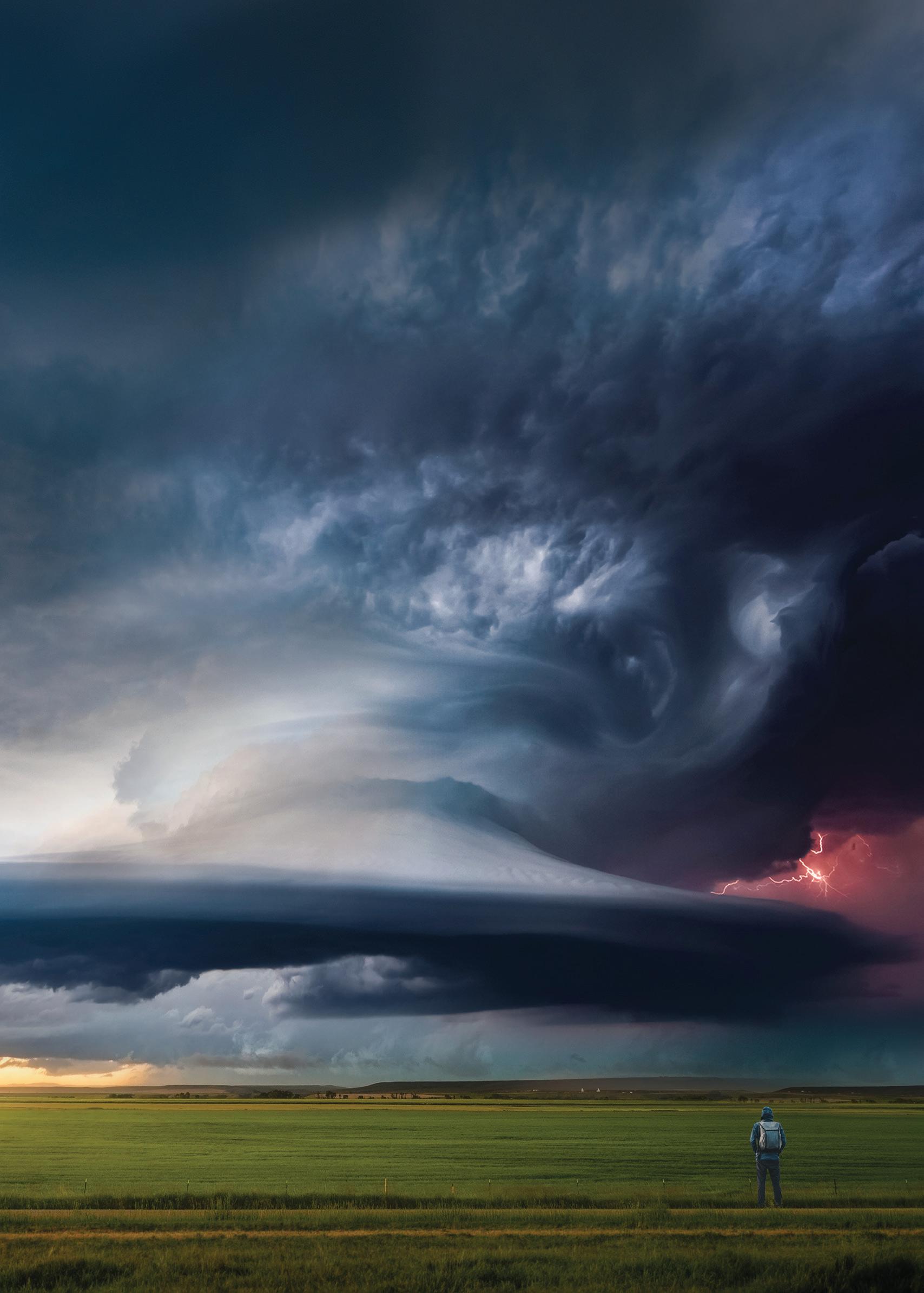
©2023 POLARTEC, LLC. POLARTEC® IS A REGISTERED TRADEMARK OF MMI-IPCO, LLC.
TIKKACORE&ACTIKCORE



ThenewTIKKACORE&ACTIKCOREarecompact,powerfulandeasyto usewithlightingsuitedtoavarietyofoutdooractivities.Withasimplesingle buttonbothheadlampsalsohaveredlightingandcomewiththeCORE rechargeablebattery.petzl.com


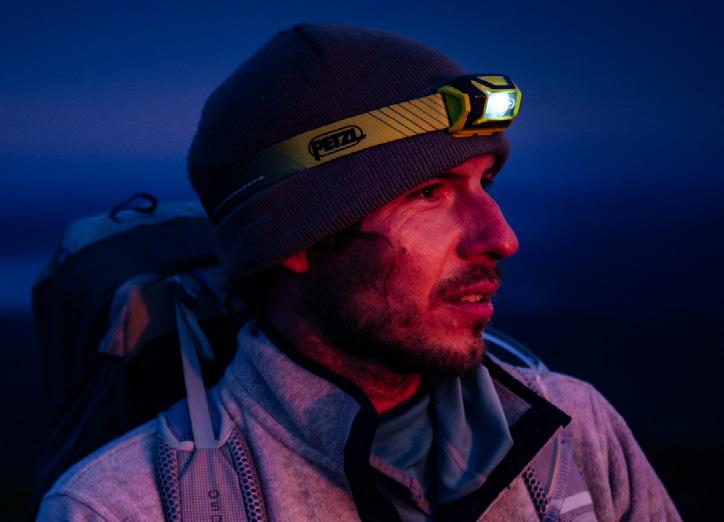



6
EDITOR’S COMMENTS
Autumn 2023 – Legacies
In the same issue, Em Linford wrote of her personal connections to Dartmoor as she campaigned for the right to wild camp there. In recent weeks, because of the relentless work of her and others, we see the decision overturned.
And long-term followers of BASE will be plenty familiar with the work of Hamish Frost – one of the best mountain photographers in the game right now and a BASE Collective member. At the centre of a new short film, Hamish shares his experiences as a queer man in the outdoor space. It’s another strong step towards the dismantling of a notoriously uniformed scene. If you haven't already seen the film, I highly recommend you do. You can find it online via the BASE website.
It’s with this framing then that we plunge into issue 11. Through the voices and stories you'll find in the following pages, we explore this notion of legacy and what it means to the contemporary adventurer.
In Trails for Wales, secondary school teacher and fervent mountain biker Tom Laws dives into the world of wild trails, exploring the challenges faced, from conflict with land owners to extreme weather and the available solutions when it comes to their preservation. Earlier in 2023, Ashley Stewart joined an all-female team of runners to run from LA to Las Vegas. In her piece, We Are All Protagonists, Ashley pays tribute to those women and the bonds they formed crossing Death Valley.
In The Changing of The Guard, Luke Gartside catches up with surf photographer Megan Gayda, busy rewriting the rulebook when it comes to the status quo in surf photography; while Hannah Mitchell talks with George King from Seoul where he faces trial for attempting to free-solo and BASE jump from South Korea’s highest building.
Adventure is awash with BIG concepts. Mortality, purpose, friendship, identity, place – all notions many of us find ourselves navigating when we’re out there chasing whatever it is that makes us tick.
Eternally entwined with adventure and its documentation, is a sense of legacy. It could be breaking new ground, smashing records or flipping stereotypes. It could also be far more lowkey: leaving the trail in better shape than we found it, helping to educate and enable others or opening up the door for others to follow. And the best examples transcend adventure.
Of course we can’t mention legacy without a nod to a few of the modern-day pioneers sitting right within our own network. In issue 10, we caught up with Norwegian powerhouse Kristin Harilla after she was forced to abandon her 14 peaks campaign, just two summits short. We knew she’d be back, and in July she cut the record, previously held by Nims Purja, in half.
In Footsteps, Francesca Turauskis considers how her heritage informs her affinity for covering long distances on foot, while, following in the steps of Ernest Shackleton, in The Edge of Sanity, Danya Schwertfeger embarks on a sixweek expedition in the Southern Ocean, challenging his own relationship with sailing.
In Translagorai, Francesco Guerra strides out to explore what could be the last remaining truly wild space in the Italian Alps and in At Home on the Water, Collective member and regular BASE contributor, Carmen Kuntz explores why it is that with a canoe and a tent, she feels so content.
And of course it’s not just the individuals that have access to shaping this sense of legacy, it’s a notion that permeates all parts of this industry through all sorts of stakeholders. In Makers and Innovators, I take a look at how Patagonia’s Worn Wear campaign attempts to reshape the life cycles of the products they make.
As ever, a huge thank you to everyone who's been involved with this issue of BASE. I hope you enjoy and find inspiration in the following pages.
Chris Hunt, BASE Editor
7
An interview with George King who’s made a name for himself climbing some of the world’s largest structures. And then jumping off them.
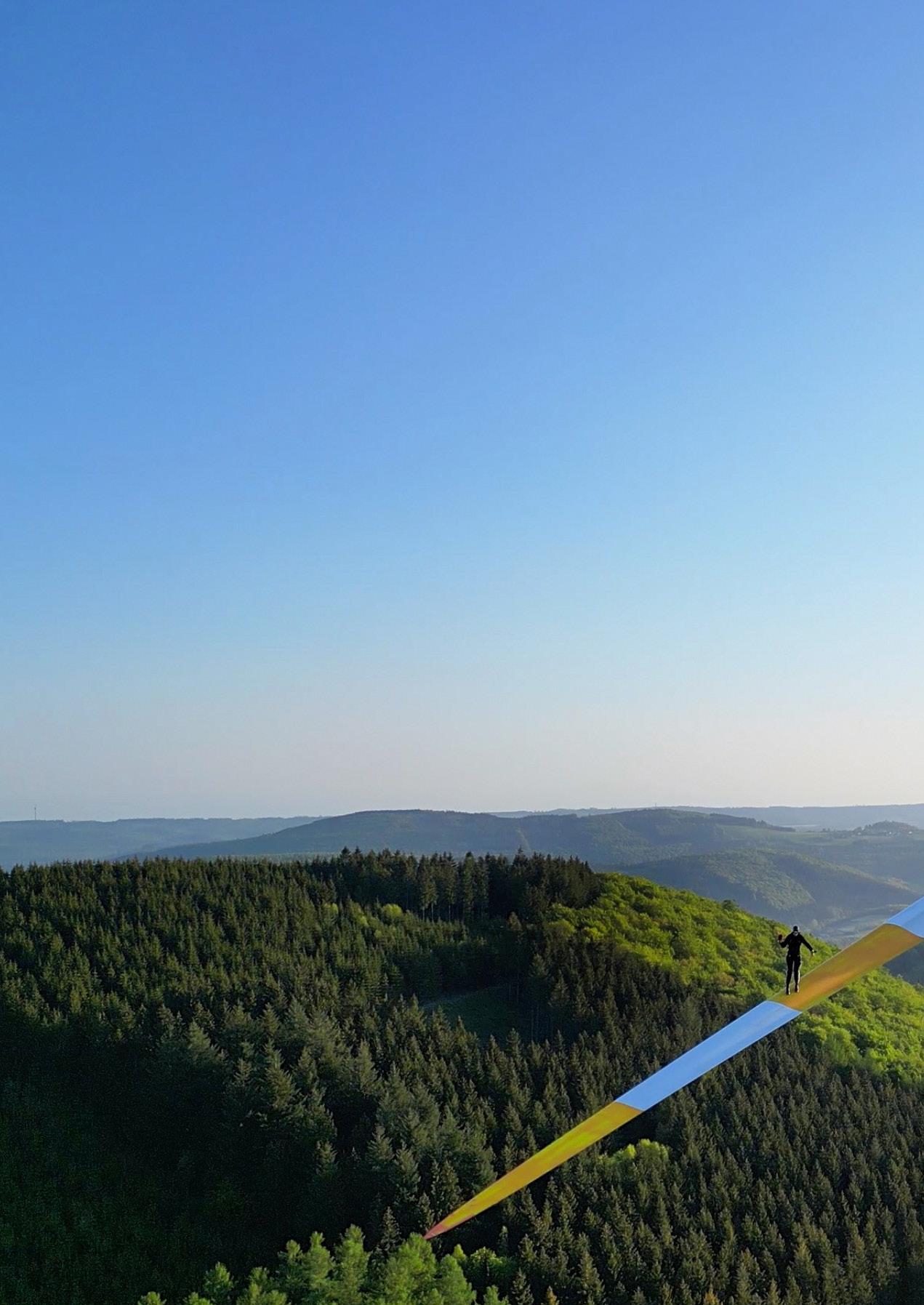
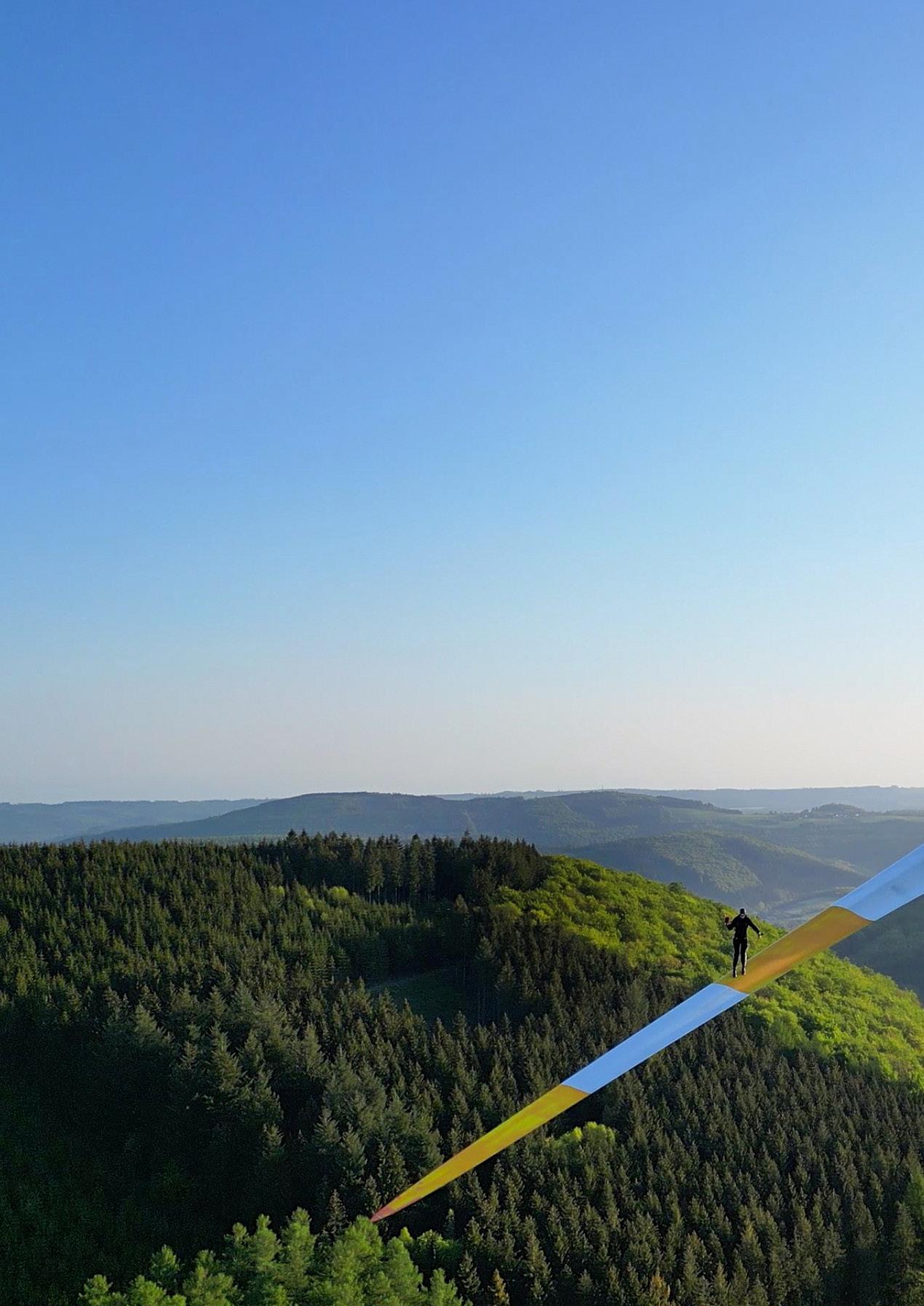
FINDING FLOW
WITH THE SHARD CLIMBER
Intro and interview | Hannah Mitchell Photos by | George King
MAIN: I struggle finding the best words to describe ‘why’ for projects like this. In the words of Philippe Petit (the man who walked between the twin towers using a tightrope): ‘there is no why.’ Simply put, for the Blade Runner project, this was just an idea that had been annoying me for two years.
In the early hours of the 12th of June 2023, George King left his hotel room in the South Korean capital of Seoul. Equipped only with climbing shoes and a small backpack containing a single parachute, he was heading for a lifetime dream: the Lotte World tower, which he would climb before BASE jumping from the top. At 7.56am, he reached the 72nd floor of the 123-storey, 555m tall building, where he was detained by the South Korean authorities, his attempt thwarted after a security guard in the building spotted him through a window.

I spoke to George from Seoul, where he faces legal trial for his urban free BASE attempt. Steeled for a conversation with the Shard Climber (a title he earned in 2019 after his ascent of the UK’s tallest building), often presented by mainstream media as a wreckless, slightly unhinged adrenaline junkie, I was pleasantly surprised by George’s cool, level-headed rationale. Perhaps even more surprising, was the relatability I found to his reasoning for climbing some of the world’s highest structures – and jumping off them.
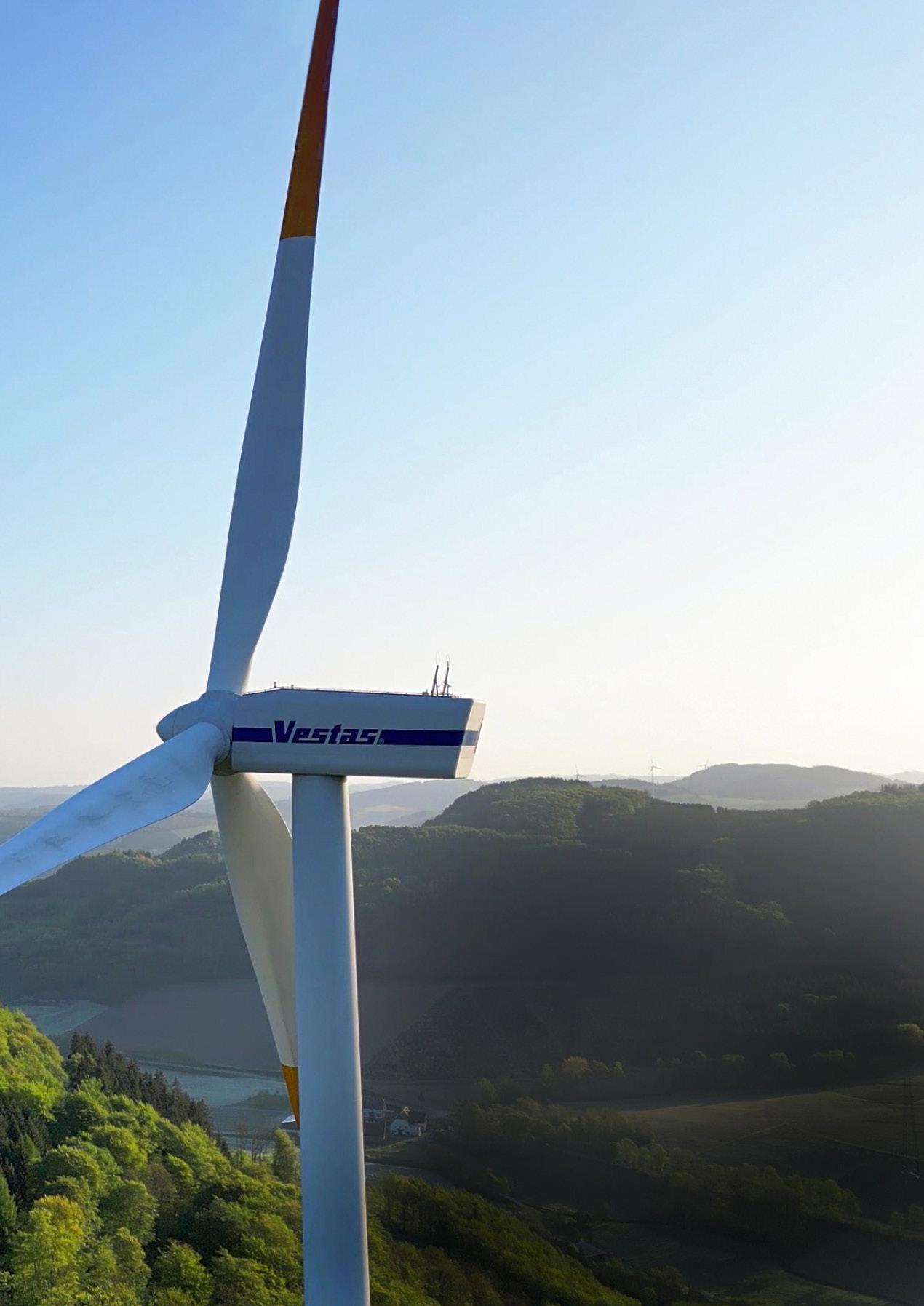
You’re currently ‘stuck’ in Korea awaiting trial – how’s it going out there?
There’s actually something very romantic about my current situation. It's this feeling that I'm sort-of stranded, but I'm also very free. Normally I have so many responsibilities, so many things for me to uphold with what I do and what I need to achieve. But it's almost like all that's been put on pause. I'm left to roam, and although I’m physically constrained, in my mind I'm free.
Had you anticipated this being a potential outcome, when you set out to climb the Lotte World Tower?
Absolutely not. I set out my ambition – and it is still my ambition – to climb to the top, jump off, land, and flee the

10
ABOVE: Ascending Europe's tallest rollercoaster with the intention of jumping off from the top. What we call urban freeBASE. The day before on my morning reconnaissance I saw that they do a test ride at 7am… I was climbing at 6:30am. What if they did the test ride a bit earlier?
“All those thoughts and that chatter just goes –it's a beautiful state of mind.”
country without a trace. Unfortunately, I failed in doing so. Retrospect is a haunting thing, but also it's a window into wisdom. Now I know there are so many things I could have done a bit differently, but really what happened is, I just wasn't quick enough and the authorities were able to trap me with a window cradle. That put my dream to an unfortunate end, and I was devastated when it first happened. I’d dreamed about this idea for so many years – urban free BASE – to climb a building and to fly off it. I planned and trained for so many months, I had it in my head, it was almost like I saw it and it was already done in my head. It just didn't happen the way I saw it.
But over the last couple of weeks, I've not had my phone, and I've been able to really think about things. I've seen so
many lessons in this whole process which I would never have seen if I hadn't failed. So I've actually come away from this whole experience with a new level of wisdom, far more than if I had succeeded. I'm actually in some way quite happy with the result now.
Can you give a bit more of an insight into that day – when you set off to climb the tower? Obviously there's an extensive planning process and the dream started years ago, but how did it feel on the day when you woke up, knowing that it was all finally materialising?


I felt extremely confident. Waking up that morning, walking to the tower from a hotel just a mile away from it. It was still nighttime, still dark. I’d planned to start the climb at sunrise.
One of the first things I’ve noticed in the past with all the buildings I've climbed in Europe is the level of humidity. So the sweat was dripping off me as I was walking to the building, and I was like, ok, this could be an issue, because I've never experienced something quite like this before. So that was one thing in my head, but besides that, I was invigorated with energy. I've had times in my life where I've really felt fear about something I'm going to do. But it wasn't the case with this, I was actually just soaking it all up and very excited to begin.
And if you had woken up and you had a bad gut feeling, is that something that you're very tuned in to? And if something felt slightly off, would you say: ok, not today, or would you push through it?
Because I'd actually planned for this one for quite some time, I think all that sort-of gut feeling, intuition stuff had already been done. I have had occasions in my life where I've been in London in the dead of night, about to free solo a skyscraper, no one knows but me, and I've had to walk away because of that gut feeling. Sometimes you can't really put your finger on what that feeling is, but you trust it because it's kept you alive this long. So yeah, there's absolutely been times where I've
11
ABOVE: One day I spontaneously went on the Park Inn rooftop for sunrise. Tilting my head over the edge, instantly the unknown dream I was looking for revealed itself: A building-to-building BASE jump from Berlin's tallest building.
walked away from a BASE jump exit solo, because I've felt something was wrong. You can't really explain why you must walk away, but often that feeling is enough.

Humans have been tuned into that gut instinct historically for survival, but I feel like nowadays, we live in this really micro-managed, health and safety kind of culture. Everyone's obsessed with blame. And we're almost completely dependent on something external to tell us what's a suitable level of risk for us. Do you think over time, humans have lost touch with their ability to register that gut feeling or to make their own risk assessments and judgments?
I think that's a really good way of putting it – I never thought of it that way before. I 100% agree with you. Our biology has changed since we were hunter-gatherers. And those sorts of instincts were the things that kept us alive. But because like you say, we live in this world where everything is very easy in the sense that you don't have to hunt your food, it's all done for you, then absolutely, you lose touch with that survival instinct and ability to judge risk.
I imagine for a lot of people that’s why when someone does something like what you're doing, for example, they just feel this sense of horror. They can't fathom being able to make that judgement themselves or take that risk. Definitely. It's a funny one, because what I do is so normal to me. A lot of people will say what I do is crazy, but the thing is, I've been inclined to do these things ever since I've been cognitively able to – ever since I've been able to think and feel and breathe. I've always done things which scare me and put me in this state of mind. So while for a lot of people it seems crazy, it's so natural and normal for me.
If you Google your name or look at reports in the mainstream media, the headlines are often daredevil, thrill seeker, or adrenaline junkie… how do you feel about those terms? Is there any truth in any of them or do you think it's just sensationalism?
I've had a lot of time to think about the connotations of those terms, it's just a very naive perspective. I understand how someone could interpret me as being an adrenaline junkie or whatever, but it is so much more complex. There are so many different parts to it.
Yes, I like the feeling of adrenaline, but I also love the process. I love the preparation, the details, the journey. It's not all about the adrenaline. So I can understand why people say that, but it’s far more complex. To the point that, even though I've spent my life trying to understand why I do the things I do, I still don't have a finite answer. I probably never will.
Within adventure sports or activities, there's often talk of this flow state that people experience. It's that feeling of calm in what is perceived as a risky situation. I think for a lot of people, it's quite hard to believe that free soloing a skyscraper, you could ever experience that clarity of mind, but is that something you experience when you're climbing?
TOP: It took approximately three weeks to find this particular turbine. Sitting above a remote valley without a cloud in sight, the setting fit the dream perfectly.

12
“A way for me to channel my internal energy into something positive.”
ABOVE: Freesolo on Tower Agbar, Barcelona: 15 minutes in aerial solitude, a stranger setting foot in another world, gazing down at the normality below. It’s mystical, like I’d entered another different dimension.
Absolutely. That flow state is actually far from what adrenaline is, it's total peace of mind. It's this tranquil energy you kind-of lose yourself in, you're like a passenger. You're not really thinking about what's going on, it's just happening. And for someone who has so-called ADHD, it's like, all those thoughts and that chatter just goes – it's a beautiful state of mind. I think I'm more addicted to that than I am to adrenaline and the euphoric thrill from doing what I do.
That flow state can be found in so many ways, it doesn't have to be climbing without a rope or BASE jumping or whatever. Artists can experience this painting, writers, businessmen, speakers; this flow state is available to anyone. I think the way to explain it is when your skill level and level of challenge are met at a certain point, and it puts you in a state where you're not so over-challenged that you're becoming dwarfed by the moment, and you're not so under-challenge that it’s less stimulating, but you're finding that perfect alignment.
I think in recent years, everyone has been really chasing that zen or mental health boost in some way, particularly relating to the outdoors or outdoor sports or activities. Do you feel like that state is helping you to process challenging internal or external factors?

100%, because if you were to take it away from me, then I would replace it with negative means. You know, alcohol, whatever. So yeah, it's absolutely a way for me to channel my internal energy into something positive. It gives me freedom, and also relief.
A lot of the criticism that you receive, particularly in relation to your most recent climb in Korea, is the use of emergency services resources in those scenarios. What are your thoughts on that?
Yeah, it's one I get a lot, and it's actually quite an unarguable one. I totally respect the emergency services on all levels and when I do meet them, they're not complaining, they're very respectful towards me and I'm always very respectful to them. We actually bond in a very interesting way. The way I perceive it, the relationship between myself and the emergency services has never been one which is spiteful. I understand the views of the public, wasting emergency services times and all the rest of it, and it is unarguable. But there's mutual respect always.
Humans have historically had a bit of a fixation on pushing boundaries and the limits of what they can do physically and mentally. What do you think it is that drives humans generally towards that? And what is it personally for you?
For me it's always the question of what I’m capable of. How far can I take it? Sometimes that can be crippling because it can take you into this obsessive mindset that can affect other areas in your life. You become so single-minded in seeing how far you can push it. That's something I've had to learn to control over the years. I can't speak for other people, but for me, it’s seeing how far I can push myself mentally or physically. It's curiosity for the unknown.
So once you leave Korea, where are you thinking of heading? Do you have a plan?
So I didn't achieve my dream of urban free BASE with this building, and for me, it's less about the building and more about the concept. So the dream is still the same – to climb and jump off a building. The next building I climb however I won’t bring the parachute. I want to just free solo a building, to get that momentum up again. And then once I do that, I'll pick a target, and I'll get it done. I don't know what that building will be, there's a long list! Will it be done by the end of the year? Potentially. It's hard to say absolutely, but within 2024, it’ll be done.

13
On two wheels or on two feet, spend any time in the forest and you’re likely to have come across mountain biking trails of some sort at some point. But how much do you really know about the life of a trail – how it got there, the people who built it and the land on which it exists?

14
Story and photography by | Tom Laws
The order of the cultivated clashing with the chaos of nature, the term wild trails means a lot and nothing all at once. Yet it’s just one way to describe a particular flavour of mountain biking. Wild trails have been part of the landscape for years, often hiding in plain sight, their locations kept as the loosest of closely guarded secrets by the pioneers of the sport. The best were built by riders with an understanding of the natural landscape – choosing venues which would avoid other users, that wouldn’t be washed away by winter storms, and would go unnoticed by landowners. The absolute best of these survive to this day, across the country, as classics.


Depending on who you ask, a number of these trails were willingly adopted or hijacked by the Forestry Commission and developed into the trail centres that we know today. Coed y Brenin, Glentress and pretty much any other managed set of singletrack started life as a collection of home-cut and often illegally crafted trails.
Fast-forward a decade or two and the trail centre has become the obvious gateway for many new mountain bikers. Starting from an easily accessible car park, a typical centre will have a number of waymarked routes of a variety of lengths and grades. Built to stand up to years of riders and weather, the trails will usually be stone clad, hard-packed singletrack, linked together by easily navigated existing forest roads. They’re a great way to get your fix. They have also brought mountain biking into the fringes of cities – Ashton Court in Bristol and Leeds Urban Bike Park both mean urban riders can grab a two-wheel fix in their lunch break. But for many riders, trail centres are just the beginning.
During the COVID19 pandemic, as riders sought to get more from their mountain biking experience, there was enormous growth in wild trail discovery. Forced to stay close to home, with time to explore, many were shocked to discover that their local hillside was already home to trails they never knew existed. At the same time fresh lines were popping up faster than ever. Add to the mix the popularity of apps like Strava, and it was becoming hard to turn a blind-eye to the vast network of trails or the scores of riders enjoying them, and in 2019 Natural Resources Wales sought to map the trails on their estate.
The bulk of this surveying was carried out by Dave Evans of Bike Corris, a rider with an understanding of the importance of these trails to the communities who build and maintain them. He took time to chat to the builders and riders and found both a community and a network of trails drenched in history. Certain wild trails it seemed were seeing far more riders than their sanctioned counterparts in the same valley!
15
“The idea of losing trails served to drive these dedicated builders deeper into the shadows and solidified a distrust of landowners.”
TOP: Ed Roberts on Skulls. The whole trail was lost in a night to a storm. Months of hard work gone in an instant.
ABOVE: Tom Laws enjoying the week of dust Wales is gifted each year. Photo © Sam Piper. FACING PAGE: Ross Lambie, Mid Wales.
At the same time, former downhill World Champion Manon Carpenter released her film, Trails on Trial which explored some of the issues around unsanctioned trails.
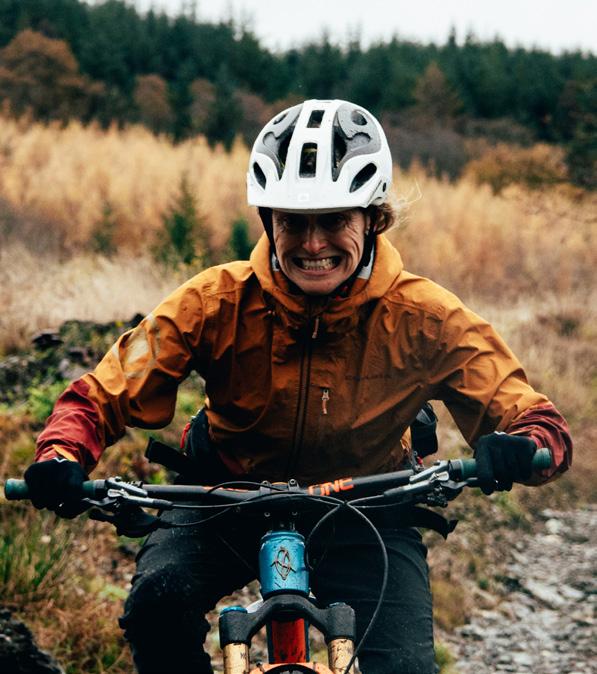

Until you’ve spent hours swinging a mattock, it’s hard to understand just how much work goes into the creation of a trail. With so much time and literal sweat invested into them, they become more than just ribbons of dirt, cherished by their custodians potentially for decades to come, and much of the riding community were becoming suspicious of this sudden spotlight on previously secret trails.
Storm damage, erosion from riders, and conflict with other land-users can all conspire to bring an end to these trails’ existence. Add in the fear of a law-suit following an incident and it’s a wonder any survive at all!
Many of the unsanctioned trails in Wales are built in commercial forestry, many of which notoriously lack resilience due to the increasing number of storms we’re seeing. Recently one of the most popular trails in North Wales was completely destroyed in a single night, with such a network of fallen trees that there is little hope for its repair.
16
“Their locations kept as the loosest of closely guarded secrets by the pioneers of the sport.”
Potentially as destructive is the massive increase in riders using these trails. Over time, a trail will evolve and erode, requiring running repairs or even a total rebuild, and at times the maintenance can be more than a solitary trail builder can cope with. This can lead to animosity between riders and those who build and maintain the trails.
In the past, fearing litigation or worse, landowners have been quick to shut down unsanctioned trails on their land. This gave rise to a deep sense of paranoia that all could be lost, seeing trail builders enter a game of cat and mouse with forest rangers. On one hillside, a land manager could turn a blind eye to half a dozen trails, whilst in the next valley, an overly fastidious worker would have a dozen healthy trees felled across a trail.
There are however next to no examples of lawsuits against landowners for injuries while riding such unsanctioned trails. The consensus seems to be that if you have chosen to ride it, any injury you might sustain is your sole responsibility and fault. Crashing into a dog walker or some other third party however, would be much more of a problem! Gaps at speed over footpaths, fast or blind exits and poorly constructed features can all cause issues.
The idea of losing trails served to drive these dedicated builders deeper into the shadows and further solidified a distrust of landowners. Clearly it was time to form relationships with landowners to secure the future of these trails.
By forming organisational bodies that can formally manage some of these trails, riders are hoping to ensure that they are not only protected, but also enhanced and developed. Through the coming together of the community, there is hope that these issues can be better managed both within the riding community and more formally with landowners to ensure the legacy of these riding spots is secured for future generations.
One such organisation, working towards a management plan for some of the area’s most popular riding spots is Trail Collective North Wales. The key thing that they are keen to stress is that they are not setting out to take credit for any trail builder’s hard work – a lot of the trails in the area can be attributed to the countless hours of a minority of builders. Instead, they aim to act as a single point of contact for landowners, riders, and trail builders – making it easier to ensure that trails are maintained.
Should an issue arise with a trail or feature, the organisation will also be able to act as the first point of contact for landowners, allowing them to liaise efficiently with trail builders to reach a solution. Trails that might have simply been felled over in the past might simply require a tweak to slow the exit in order to be tolerated. Collisions with other forest users could be prevented by the implementation of clear signage on the most popular trails. Why you would want to try and walk a dog down a rowdy bike trail however, is beyond me!
Across the small number of trails under their management, TCNW also looks to facilitate public maintenance events. These dig days not only allow the original trail builders access to help to keep their trail running great, but would allow riders, who previously felt unable to take part, the opportunity to work alongside skilled and experienced trail builders, even paying back a little for that ride perhaps! And as more riders develop a greater appreciation for the hard work and dedication they require, the hope is that we’ll foster a deep respect for the trails and the spaces in which they exist.
So where does this leave us at present? Across Wales, TCNW and other organisations are working on management plans to present to landowners. But our trails are always in need of some love, so here are a few things you can do to help.
1. Find out if your riding area has a trail group associated with it, and reach out to them.
2. If you know who the builders of your local trails are, drop them a message and see if they need a hand, or maybe a beer. Their hard work means you have somewhere to ride.
3. Should you happen across a trail builder on a ride, take the time to stop and chat, maybe even offer to swing a mattock for a few minutes. More often than not they have sacrificed a bike ride to build something you are riding.
4. When you ride, think about the impact you are having. After rain some trails can really suffer from heavy traffic. It’s always worth using resources such as Trailforks to find out if there are any closed trails where you are planning to ride.
5. Enjoy your access to wild places responsibly. The team at Trash Free Trails have great sets of resources to help you add some purposeful adventure to your ride.
For further reading check out trailcollective.co.uk and trashfreetrails.org

17
CLOCKWISE FROM TOP LEFT: Wild trails don't have to be sanitised to be accepted by landowners – Dom and The Lion deep in a North Wales classic; It's not just the trails that are wild. Marv Davies pulling faces in Mid Wales; Clare Mitchell relishing another superb trail in Dyfi Forest.
EDGE OF SANITY
 Story and photography by | Danya Schwertfeger
Story and photography by | Danya Schwertfeger
Unimpeded by landmass, with huge storms circling these lower latitudes, the Southern Ocean is notoriously home to some of the world’s most treacherous waters. So, considering his own disdain for sailing, agreeing to join a six-week sailing expedition in Antarctic waters, following in the footsteps of Shackleton, was a surprising choice for photographer and filmmaker Danya Schwertfeger.
 ABOVE: My buddy Dominik Petel during one of our three-hour shifts at some time in the morning heading through a rather windy section.
ABOVE: My buddy Dominik Petel during one of our three-hour shifts at some time in the morning heading through a rather windy section.
Early one morning, I'm alone on shift at the helm of the boat, somewhere in the middle of the Southern Ocean. As the rest of the crew sleeps, the cold wind and rain blasts me from the stern but the music blasting in my headphones is enough to lighten my spirits. As the boat sways rhythmically, Anemone by The Brian Jonestown Massacre sets the perfect vibe. Suddenly I’m pushed off-balance, tilted 45-degrees. As the boat rights itself, another wave slams into us from behind and before I know it, I'm waist-deep in water. Another tilt, this time nearly 70 degrees. The chill of the Southern Ocean rushes past, and I have a stark realisation. Lost at sea is inevitable. This might just be how it ends.
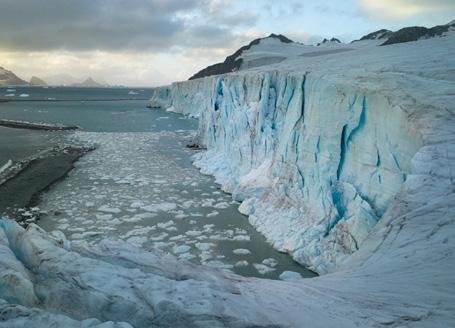

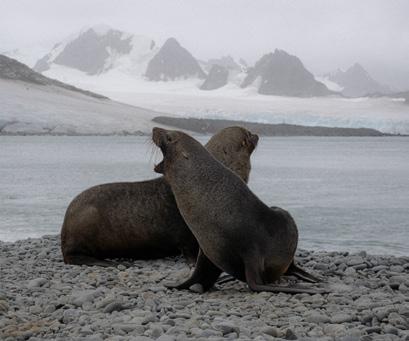



20
CLOCKWISE FROM TOP LEFT: Waiting for better weather in the South Orkneys; After the first person on the rowing boat had been rescued the rowers were pulling two-man shifts; Looking down at a herd of sea lions, basking in the sun; Scottish adventure photographer Ewan Harvey, in the evening light of an exceptional evening in Antarctica; Angel investor and adventurer Stefan Ivanov during one of his shifts on deck; Icebergs floating in the Southern Ocean; Glacier, South Orkney on Orcadas Base; Fur sea lions in what was going to be a blizzard.
Then, a jolt. My harness pulls me back. It's connected to the boat. I'm saved. As water drains away, adrenaline surges, replaced swiftly by euphoria. With white knuckles, I grip the helm once more. Sailing never felt more thrilling.
A shout from below abruptly breaks my elation. ‘What did you do!?’ Ewan's outrage is unmistakable. He appears for a moment. ‘We're flooded!’ I dismiss his panic as an overreaction. Unfazed, I finish my shift.
At this point, I’ll rewind to where this adventure began: Ushuaia, a surprisingly populous city of 80,000 people. This was our launch pad for the six-week journey to the planet's end. Here, I'd meet my 13 companions – Adam, a camera operator from New York, Ewan, a Scottish photographer, Captain Piotr, three sailors, and six athletes – within the next 24 hours and for the next three days we’d prepare our gear.
Eventually, we were introduced to Selma, a 20-metre, battle-hardened ketch. Its worn sails and robust rigging were reminiscent of the Millennium Falcon – a veteran of countless adventures. Home for the next six weeks.
Despite unsettling tales of boat sinkings, the Drake Passage welcomed us with mild, two-metre waves and northerly winds. After six days at sea, we arrived at King George Island.



Here, we split with the rowing team we were here to document, and at the Polish Scientific base, we realised the high value of fresh produce. With just a box of bananas and some veggies, Captain Piotr secured us showers, accommodations, and meals.
Within two days, the team cleaned and prepped the eightmetre rowing boat, packing food, water, and necessities for the next 20 days at sea. The boat had two cabins that could shelter five, meaning that while the rest huddled for warmth, at all times, one crew member would have to endure the harsh weather.
With rudimentary quarters, essential electronics, and survival gear in place, we embarked, following in Ernest Shackleton's footsteps, following the rowers as they set off to traverse 900 nautical miles to South Georgia, putting into practice years of planning, countless Zoom calls, and substantial investment.
With the first strokes underway, the energy on both boats was ecstatic… which lasted all of about 20 minutes before the
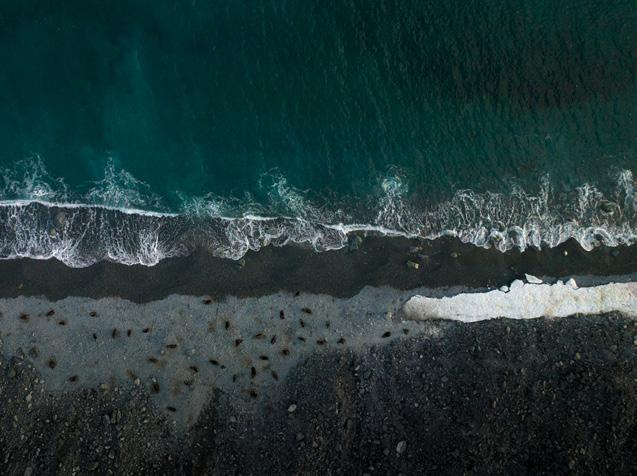
21
“The constant sway of the waves makes six-hour breaks feel eternal, yet rest remains elusive.”
cold set in and we were forced to shelter with tea and huddle for warmth.
Life aboard Selma is simple but gruelling. We sleep until we can't, eat, and then sleep again. The constant sway of the waves makes six-hour breaks feel eternal, yet rest remains elusive. With the boat's batteries failing and the heater useless unless stationary, survival trumps routine.
In the frigid interior, my sleeping bag rated for -7 degrees is no match. Navigating the narrow corridors without bumping my head becomes a daily challenge as I find comfort in the trip to the kitchen, brewing tea, and the never-ending campaign to dry my slippers.
I relieve Dominik at the helm, where our task is capturing images of the rowers or passing icebergs. One rower seems particularly miserable, slumped over his oars. It's a mystery to us on Selma, but seasickness is the suspected culprit. As my shift ends, I grapple with my own meal, hoping not to douse my already overworn trousers.
Our surroundings are a monotonous expanse of waves, punctuated by the occasional albatross or updates from the rowing boat. Attempting to read or watch movies just aggravates our seasickness. We sleep.
By day three, slumped over his oars, Mike, our seasick rower, resembles a croissant. We pass the formidable Elephant and Clarence Islands and indulge in fantasies of conquering their untamed summits.
Sailing in Antarctica is a paradox – breathtaking wildlife sightings clash with a burning desire to escape the relentless waves, the cold, and the wet. While I yearn to relish every moment in this awe-inspiring wilderness, reaching South
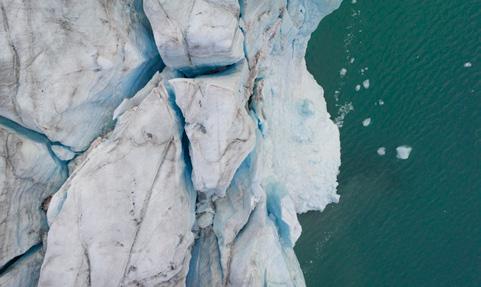
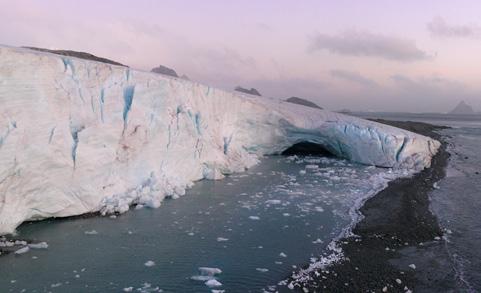

Georgia to conclude our expedition becomes my overriding focus. As each knot gained delivers us closer to the end of our journey, wind direction and its impact on the speed of the rowers becomes our obsession.
Day four takes a dramatic turn as a 4am wake-up call kicks off a rescue mission. Unable to keep any food down for the past four days, Mike is critically hypothermic. His tenacity kept him on the rowing boat until the point of physical extraction. Aboard Selma, we devote the morning to nursing him back to health, dwarfed by the enormity of surrounding icebergs.
By day six, a shift in wind direction prompts a change in our plan. Given the rowers' deteriorating physical and mental state, we're to aim for the South Orkney Islands, just oneday's sail away. The decision, obvious enough to us, is a bitter pill for the rowing team, forced to confront bruised egos.

22
“Breathtaking wildlife sightings clash with a burning desire to escape.”
At the Orcadas base, we're warmly welcomed by the Argentinian crew, their football-loving spirits high on their recent World Cup victory. The base is rudimentary but comfortable, equipped with a communal kitchen and shared bathrooms, its warmth a stark contrast to the harsh outdoor elements. The scientists, builders, cooks and cleaners live in what feels like a university halls of residence. Homemade liquor is their communal religion.
Having picked up the rowing team, the Argentinian Coast Guard's arrival marks our last opportunity to interview them. But in a whirl of rapid events, the team is whisked away by a warship, leaving us stunned and interview-less.

Days later, bracing for a stormy night with gale-force winds, we find ourselves anchored in the narrow bay of Signy Island. Retreating to the cosy cabin, we succumb to a nostalgic spell, regaling each other with tales over a selection of spirits.
Awaking collectively hungover, our mission for the day is to find grass for Piotr's scientist friend back in Poland. As we step foot on Signy Island, we set our sights on an unclimbed mountain, braving a perilous climb up a rocky chute. Our triumphant anticipation quickly deflates when we find the summit already marked by flags. Regardless, the adventure instils a sense of camaraderie and good-humoured absurdity.
Back onboard, Piotr, our serene captain, surrounds himself with the collected grass by his favoured sleeping spot. Despite its location by the helm and the constant chatter, he sleeps peacefully, sporadically monitoring the course and sail position with a single eye. A cup of tea or coffee from a crewmate is all he needs to keep his spirits high.
So here we are a few weeks into the trip, on our way home, still almost two weeks from Ushuaia. It’s 7am and I’m on the helm. I need not reiterate how a momentary lack of concentration and skill almost landed me in the Southern Ocean and almost cost me my life.

Climbing down into the cabin, I find the rest of the boat in chaos. Water floods in, the bilge pump in overdrive, tomato juice is splattered across the kitchen, and my oncedry cabin is awash with water. My electronics submerged, my bed drenched, and the contents of my 'dry bag' of clothes, a waterlogged mess. The crew had been too engrossed in damage control to notify me sooner. Side glances and a disappointed gaze from the captain were all I needed to realise my blunder.
With my poor sleeping bag damp and miserable, sleep became a series of brief 45-minute spells, punctuated by shivering awakenings and foot-rubbing sessions. After three of these cycles, I'd surrender to the cold, retreating to the pilot house to contemplate the ocean and count down our remaining days, returning to the dank depths of my cabin only when exhaustion took over.
Eventually, fatigue became overwhelming, and my existence was reduced to simply staring out at the ocean, counting down the remaining days. Sleep-wrecked days seemed endless. The key was finding a way to stay positive. Laughing, making pancakes for the boys and lifting their spirits became my escape.
Through the damp exhaustion, one fundamental truth resonated deeply: Sailing becomes your way of life. You don't just guide the ship, you commune with the elements, allowing the vessel to find its own path. The quietude of sailing, without motor, invites an intimate dialogue with wildlife while nature graciously reveals itself to us. This unique interaction is what makes sailing through Antarctica such an enthralling journey.
23
CLOCKWISE FROM TOP LEFT: Looking down at the glacier in South Orkney; Ice cave looking at one of the many glaciers on Laurie Island, South Orkney; The whole rowing team at Orcadas base, had won 12 world records; Selma, our sailing boat with Arcadas base in the background. Waiting for permission to land; Antarctica locals.
GRAVEL LIKE A LOCAL: EXPLORING THE AUSTRIAN ALPS BY BIKE

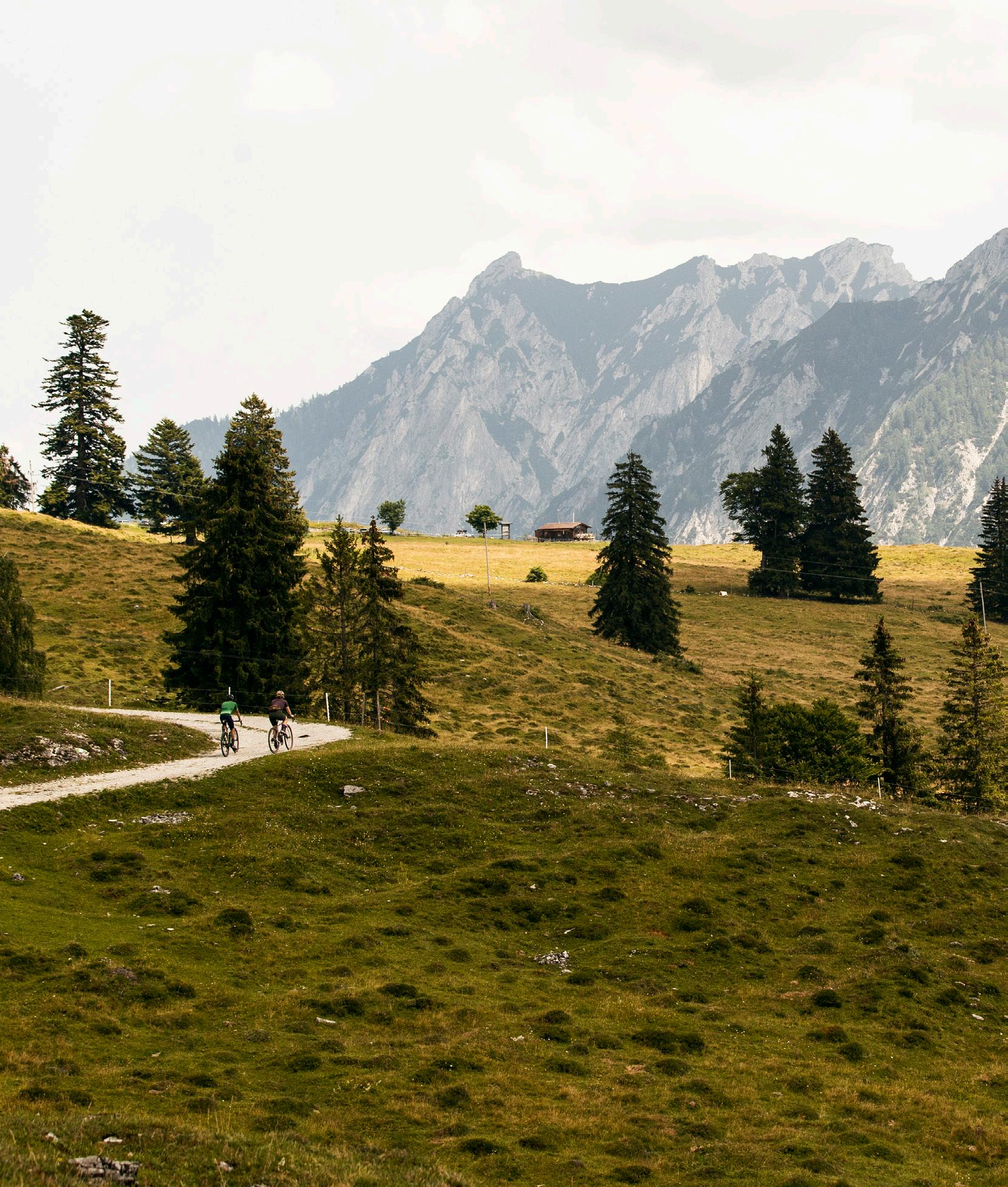
24 IN PARTNERSHIP WITH
Story by | Katherine Moore Photography by | David Robinson
With more than 60% of the country’s landmass belonging to the Eastern Alps, Austria's stunning network of winding gravel roads, glacial rivers and high passes, could just be the ultimate Alpine destination for the adventure cyclist. To test the theory, gravel aficionado Katherine Moore teams up with Salzburg mensch-in-the-know Max Riese to discover what makes his home city of Salzburg the perfect one-stopshop for a long weekend in the saddle.
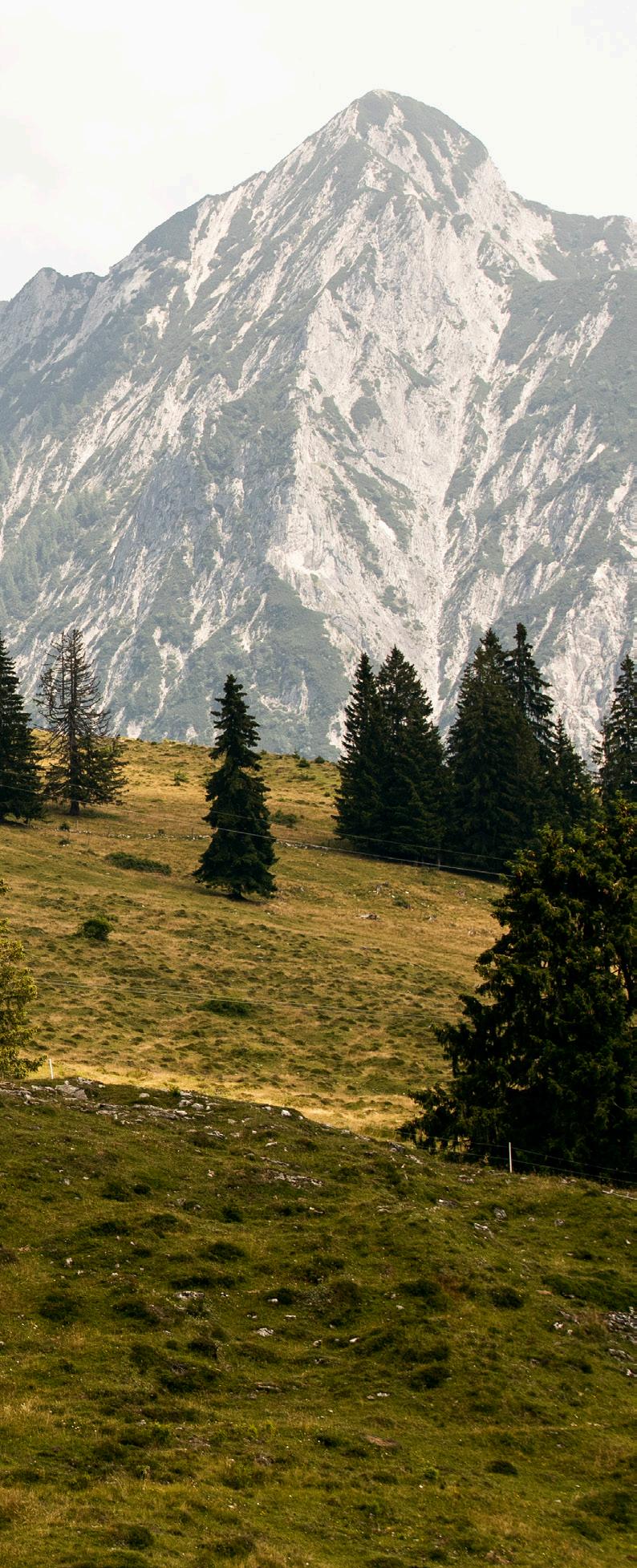
I’d been hearing all about the riding in Salzburg for years after one of my best friends emigrated there, so when the chance arrived to explore it myself, naturally, I jumped at it. Surrounded by mountains and the gateway to the Austrian Alps, it’s become one of the definitive European adventure hubs where a savvy international crowd has flocked. With gravel also really taking off there, I wanted to see what could be possible within a long weekend or a week’s revitalising break.
To get a proper feel for the place, I tasked Salzburg local (and trusted friend of BASE) Max Riese with not only sharing some of his most-revered local gravel routes, but also introducing me to a few of the key characters at the heart of the Salzburg cycling community.
As a known ultra-cyclist himself, Max has been instrumental in nurturing the burgeoning gravel scene here. His knowledge and passion for the area shines through, pointing out each peak, path, valley and hidden waterfall with stories having spent every free moment of the last 12 years exploring these mountains.
Max regularly rides with a crew of local pals, around half Austrian nationals and half international professionals, who have adopted Salzburg as their new mountain home. John Braynard is one such character. Hailing from the US, he now heads up global social media at Red Bull HQ and can certainly be credited with sharing the appeal of riding in Salzburg with a larger community.
When John arrived here 11 years ago, the scene was purely racing-focussed. With a keen eye for a killer image and a penchant for exploration over simply tackling passes as fast as legs and lungs would allow, he cultivated an alternative attitude to riding here, and has since taken many more along with him for the ride.
25
ABOVE: High mountain pasture gravel from Postalm. Even my steed is Austrian; a carbon fibre, custom painted 1of1 gravel bike from Mondsee.
Hopping on the bike really is the best way to get to know the city. While the baroque plazas are breathtakingly beautiful to ride around, we hauled up the steep cobbled climb on the castle-topped city mountain, Mönchsberg, for the best views. From this vantage point at eye level with the bell towers, copper domes, spires and turrets, you look across the old city and the patchwork of terracotta, slate and metal roofs.
Besides the urban centre, Salzburg feels genuinely relaxed, lush and green. Locals sunbathe and dip next to The Almkanal (the mountain water canal), gravel trails line the river and gorgeous estate parks are open to the public. There are plenty more quirky places to visit and where local riders love to hang out, from speciality coffee at Kaffee Alchemie to FUXN’s buzzing beer garden.
Max assures me that a rider’s tour of Salzburg wouldn’t be complete without a trip to Fanzy Bikes. Behind the bright mural frontage and racks of retro mountain bikes stands Jakob Deutschmann, all bouffant, moustache, unbuttoned overalls and a broad smile. Much like his character, the shop is anything but ordinary; kitted out only with salvaged old bikes given proper TLC and a new lease of life.
In the time it takes to sip an Almdudler (often considered the national drink of Austria) a dozen people have popped in for a drink or a quick hello. Besides offering something truly unique (and frankly a little barmy by modern standards) it’s clear that Jakob, alongside Dani Herlbauer (another cycling nut who runs local shop Bikepalast), is a much liked and respected player in Salzburg’s vibrant cycling scene.

Sticking with a theme, my base for the week is Hotel Jakob, a pioneering sports hotel on the edge of Lake Fuschl, just half
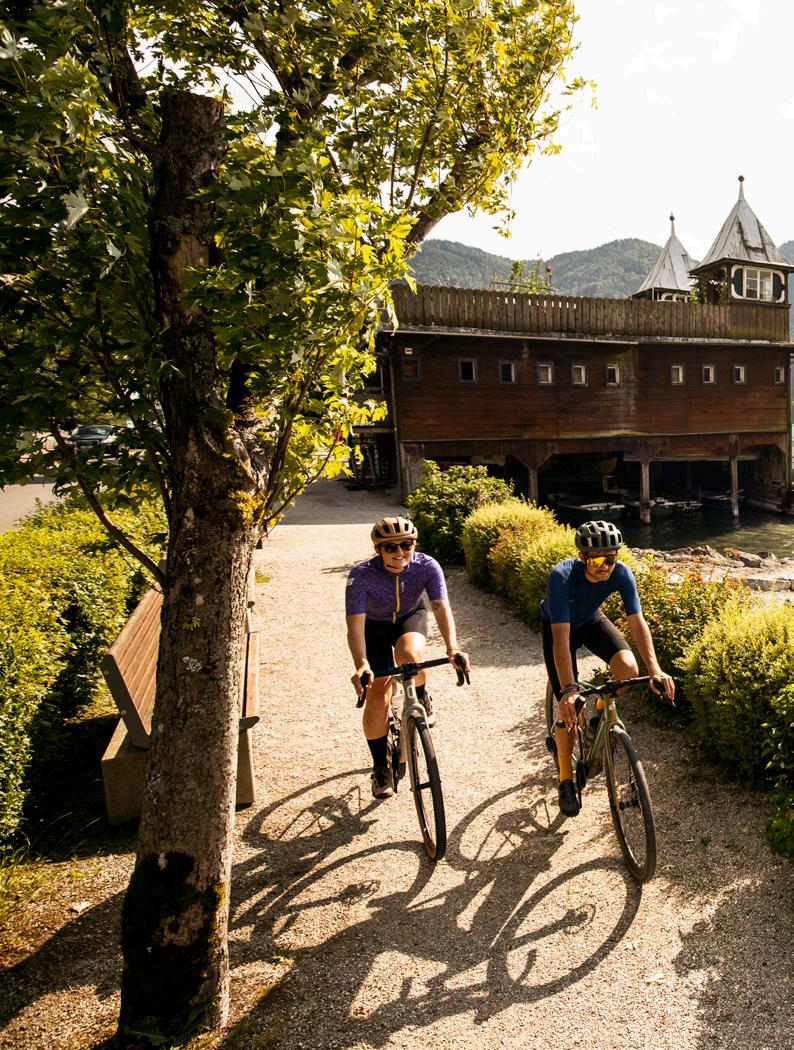
GLOSSARY
-see: lake
-tal: valley
-alm: pasture
-weg: way
-berg: mountain
-ach: river
-burg: castle
-wald: forest
26
“Surrounded by mountains and the gateway to the Austrian Alps, it’s become one of the definitive European adventure hubs.”
CLOCKWISE FROM TOP LEFT: Sipping a pre-ride coffee by the river at Kaffie Alchemie; Jakob Deutschmann of Fanzy Bikes with one of his current retro ride; Cooling off with a dip in the Almkanal; Skirting the shores of Fuschlsee.
60%
an hour from Salzburg and also the site for Red Bull HQ. A passionate cyclist and triathlete himself, fifth generation hotelier Jakob Schmidlechner saw the opportunity to create a dedicated offering for cyclists here in the mountains.
Equipped with everything you might need from secure bike storage and hire to sports massage offerings, Jakob and his team have not only created a cyclist’s paradise in this mountainous adventure playground, but also fostered a community of like-minded souls.

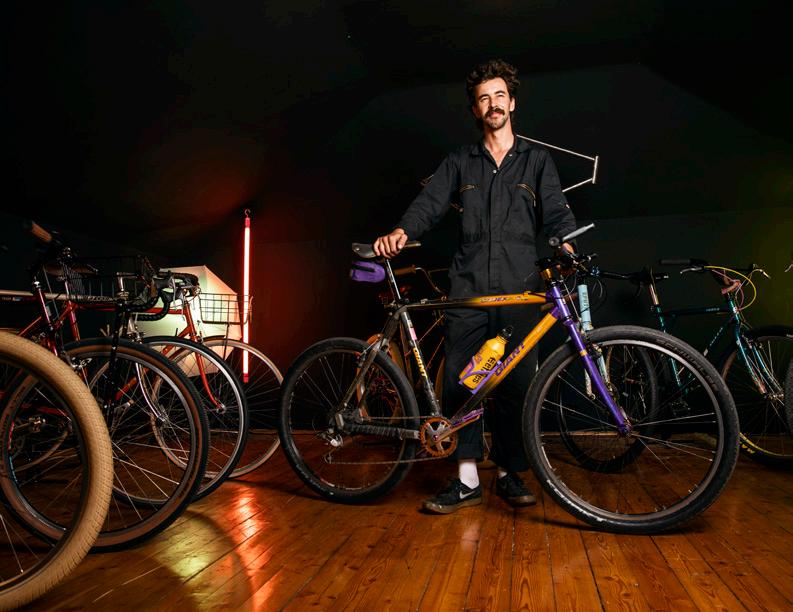
And the riding? Well, while you can access plenty of excellent gravel trails directly from the city, the out-and-back can add significant mileage if you’re planning on exploring deeper into the mountains. Thankfully, Salzburg is super well connected with trains that offer regular services and free bike carriage, so you can save your legs for the long Alpine climbs and sublime balcony gravel roads instead.
Here are four of Max’s local tried and tested favourites that you can use to form the backbone of a trip, whether that’s a long weekend or a full week of gravel riding in SalzburgerLand. You’ll find everything from an easier loop straight from the city to longer days climbing to high Alpine pastures, with refreshing lake dips and many traditional mountain huts to stop by for the authentic Austrian mountain experience.
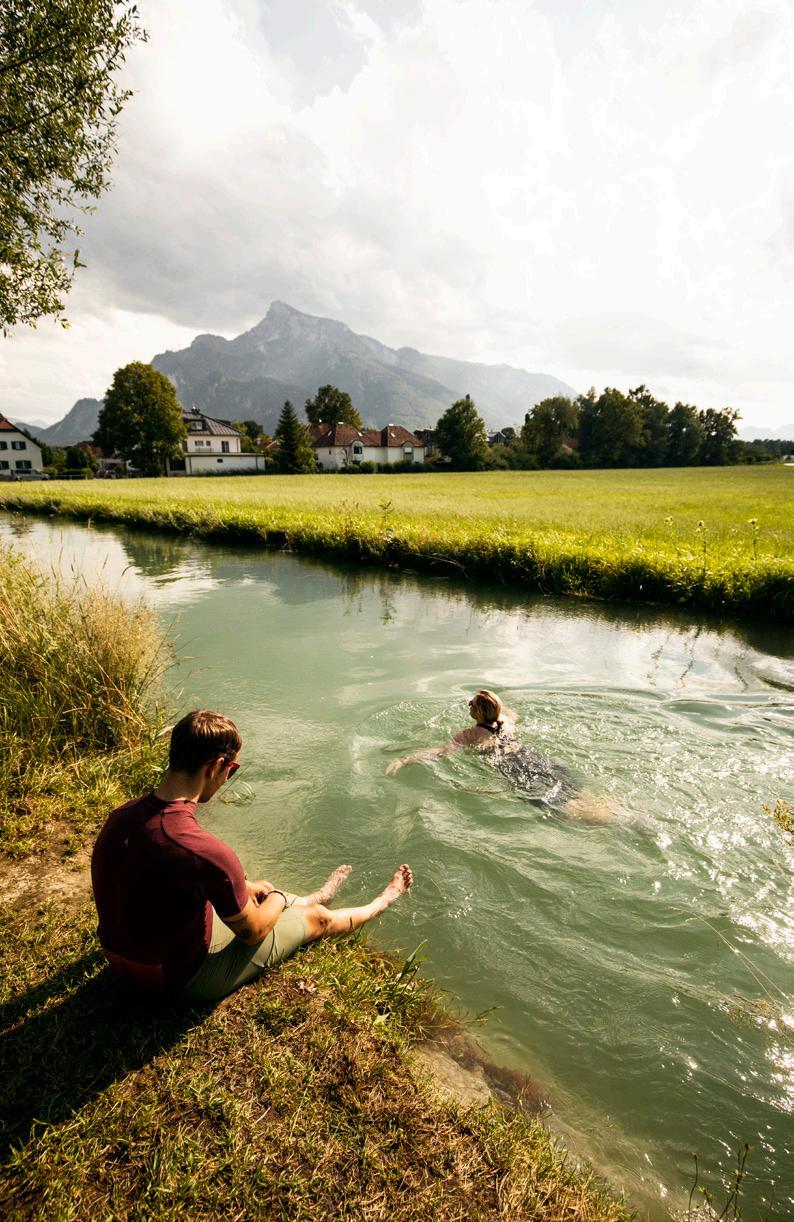
27
MORE THAN 60% OF AUSTRIA'S LANDMASS BELONGS TO THE EASTERN ALPS
Route The Haunsberg trail
Route Strubklamm
to Gaisberg Figure of Eight
↗ 67 km, 650 m climbing, 4.5 hours
↗ Intermediate
↗ POIs: Haunsberg viewpoint
The perfect acclimatisation ride for your first day, the Haunsberg trail eases you into the vertiginous landscape with lush green hills rather than high mountain passes. Don’t think that you’ll be sacrificing scenery though; the views from the summit are arguably the best around Salzburg.

After the climb and a fantastic section of flowing singletrack trail, you reach a tiny chapel and crown-topped monument commemorating the visit of Emperor Joseph II in the late 1700s. To the east, there’s the iconic shark-fin mountain of the Schafberg, while the glacial peak of Dachstein can be seen beyond. Closer-by, the mound-like mountain of Gaisberg on the edge of the city is the go-to climb for local cyclists before or after work.
Looking north-east, there’s a gorgeous vista over Seenland, the Salzburg Lake District. Turn 180 degrees for a more agricultural scene, Germany’s Bavaria clearly seen over the snaking River Salzach.
INSIDER TIP: There’s a perfect reason that this is one of Max’s favourite rides to do before or after work. An early start is rewarded by a glorious sunrise over the mountains, while sunset is savoured over the German border before a delicious twilight descent back to the city.
↗ 46.8 km, 900 metres climbing, 4 hours
↗ Intermediate ↗ POIs: Hintersee, Vordersee, Felsenbad and Strubklamm gorge


Starting from the Alchemie coffee shop on the banks of the Salzach River, this figure of eight loop gives you the option for a shorter loop totalling 27km, or the full double loop taking in two iconic lakes and an outstanding balcony road through the Strubklamm gorge.
Soon out of the city, serene forest gravel tracks lead you to Koppl, before riding beside charming old water mills and lush pastures. From Ebenau the second loop begins, with flowing tarmac interspersed with thrilling gravel sectors leading you through Faistenau to the edge of Hintersee. Pop off your socks for a refreshing paddle.
INSIDER TIP: For a more secluded swim spot, head to Felsenbad a little further along, with a spectacular series of natural pools carved into the rock bed of the river.
A real treat is in store for you after you pass the Vordersee, as you continue onto the supreme tarmac road through the Strubklamm gorge. The road is pure bliss, though you’ll want to stop by the side of the quiet road to take in the magnitude of the sheer rock faces surrounding you.
Forested gravel tracks form the final climb with some testing gradients of up to 15%, though you’re mightily rewarded while descending on tarmac between wildflower meadows back towards the city.
28
With thanks to Hotel Jakob for providing accommodation during this trip.
↗ Learn more at Austria.info
Route Alte Postalmstrasse
Route Lake Seewaldsee
↗ 69.4 km, 1,620 metres climbing, 6.5 hours
↗ Advanced
↗ POIs: Old Postalmstrasse gravel climb, Huberhütte mountain hut, Postalm pastures

Featuring one of the most scenic old pass roads taking you up into Austria’s largest Alpine pasture, this route is truly worthy to be named the queen stage of any SalzburgerLand gravel riding holiday. From Salzburg, you can take a 30-minute local train directly to Golling with your bike that delivers you straight into the heart of the mountains. The first climb of the day sticks to the pristine tarmac heading west. The main event begins when you reach Pichl, where the old road up to Postalm starts. With the modern, tarmac toll road now on the other side of the Einberg, you can enjoy this 16-kilometre gravel track in peace, taking in the many waterfalls along on your ascent.
The last push up to Huber Hütte gets pretty steep, but it’s certainly worth it. The gravel doubletrack snakes up through the pasture, Fleckvieh and Pinzgauer cattle nonchalantly grazing, cowbells tinkling.
INSIDER TIP: There’s a generous menu of local specialties on offer at the hut, which is one of the oldest on the Postalm. Kaspressknödelsuppe, a sort of cheesy bread dumpling served in a broth-like soup, comes highly recommended.
After refuelling, it’s time to relish the incredible descent from 1,350 metres back down to the Lammer Valley, this time taking some sublime tarmac on the toll road, Postalmstrasse. The single carriageway descent twists and turns as you head down through the forest and through more farm pastures, weaving between traditional mountain chalets. You’ll struggle to keep your eyes on the road though, with the spectacular jagged silhouette of both the Tennen Mountains and the Gosaukamm range’s high peak of Bischofsmütze — the Bishop’s Hat — before you.
↗ 39 km, 940 metres climbing, 3.5 hours
↗ Intermediate
↗ POIs: Aubachfall waterfall, Lake Seewaldsee, Auerhütte mountain hut
Glorious gravel, breathtaking mountain views, a serene lake, waterfalls and the traditional mountain hut experience; the Seewaldsee loop really does have it all.
From Golling train station, an easy journey out of the city, you take the gravelly bike path through the Lammer Valley to awaken the legs. After Volgau there’s a short detour to visit the impressive Aubachfall waterfall which you simply can’t miss.
Here the ascent begins in earnest, with some classic tarmac Alpine hairpins that gloriously crumble into a gravel track after the farms. Not only does this doubletrack offer marvellous mountain views as you climb, but the sheer rock face beside you is a mighty sight in itself.
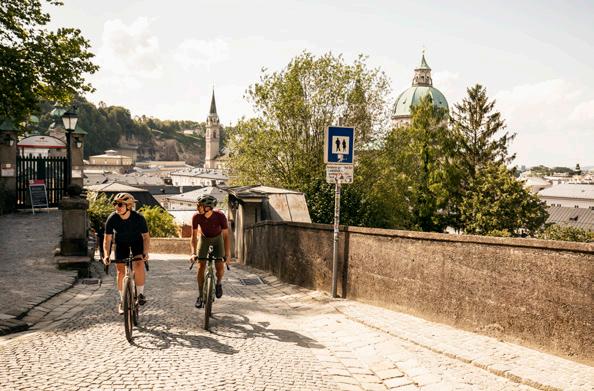
Seven kilometres after the waterfall, you earn your first sweet glimpse of Lake Seewaldsee. Much unlike the expansive, bright aqua waters of Lake Fuschlsee, pretty Seewaldsee is modest in appearance. The lake’s edge laps over onto the pasture, creating a marshy margin flanked by pine forests. It truly is a hidden gem up here, and reaching it by pedal power makes that feel all the more special.
Auerhütte sits proudly just above the lake, offering its patrons — and wonderful menagerie of livestock — spectacular views over the water. Whether you’re in need of a hearty meal or something a little lighter, there’s plenty of traditional Austrian cuisine to savour here. I opted for the Topfenstrudel, best described as apple strudel meets egg custard tart. Divine.
Complete the loop back to Golling by descending through the enchanted forest on the smooth sliver of paved road. Pastures, chalets and farmsteads set the scene for your final descent; pure joy in the shadow of the Tennen Mountains.
29
WE ARE ALL PROTAGONISTS
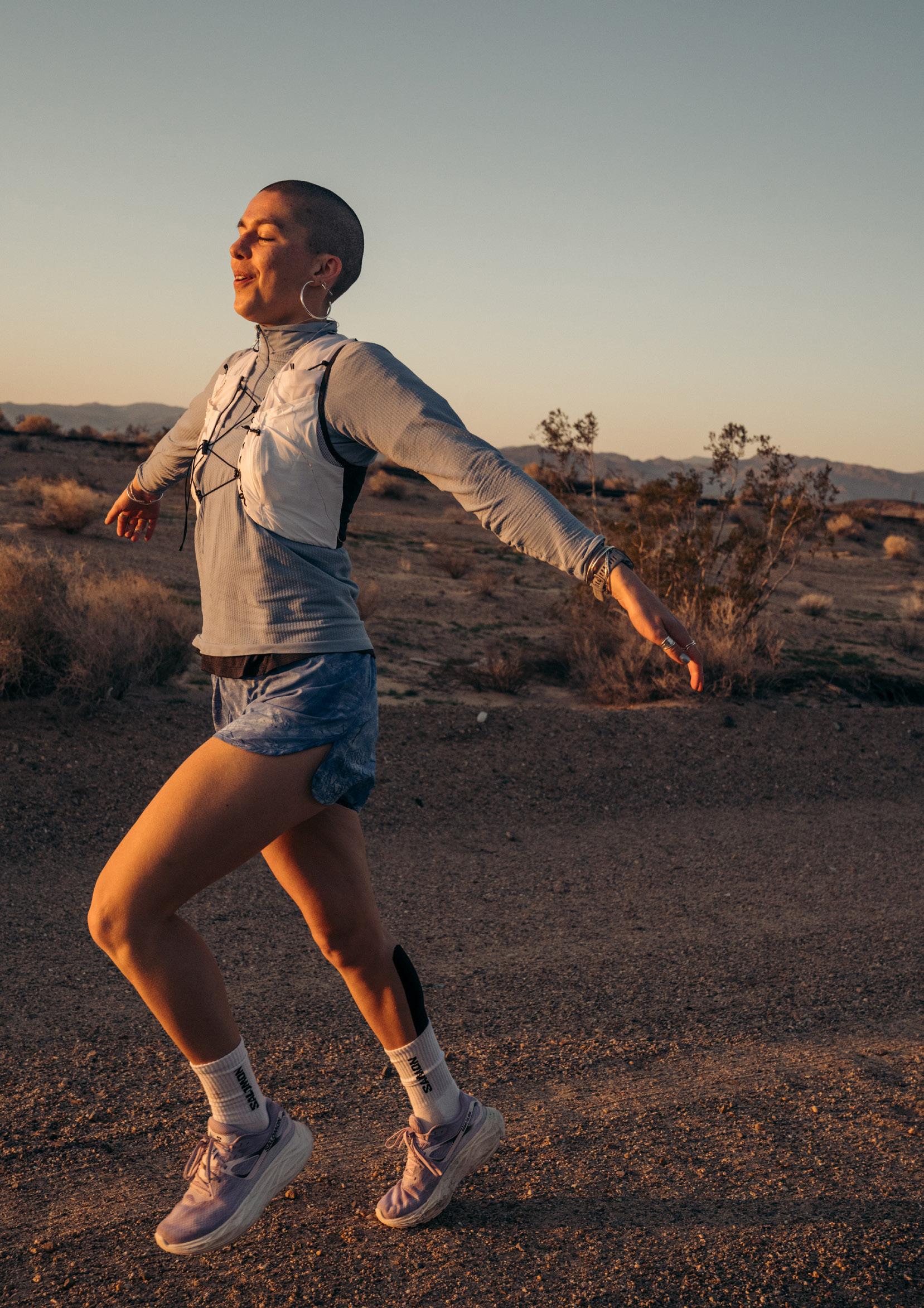
30
Story and photography by | Ashley Stewart
2023 marked the tenth year of The Speed Project : an unsanctioned 300-mile running race from Los Angeles through the Mojave Desert to Vegas. There are no rules, no prizes, no spectators, and no set route to follow. At the starting line on Santa Monica Pier this year, was a relay team of eight women – none of whom had previously met. What could possibly go wrong?
We were a team of fourteen. Two filmmakers, four support crew, and eight runners, who set out to run across Death Valley over the course of two and a half days. Fuelled by gummy bears, sports gels and adrenaline, we came together as complete strangers from all over the world. Most of us had never even heard of The Speed Project until we were asked to join the team.
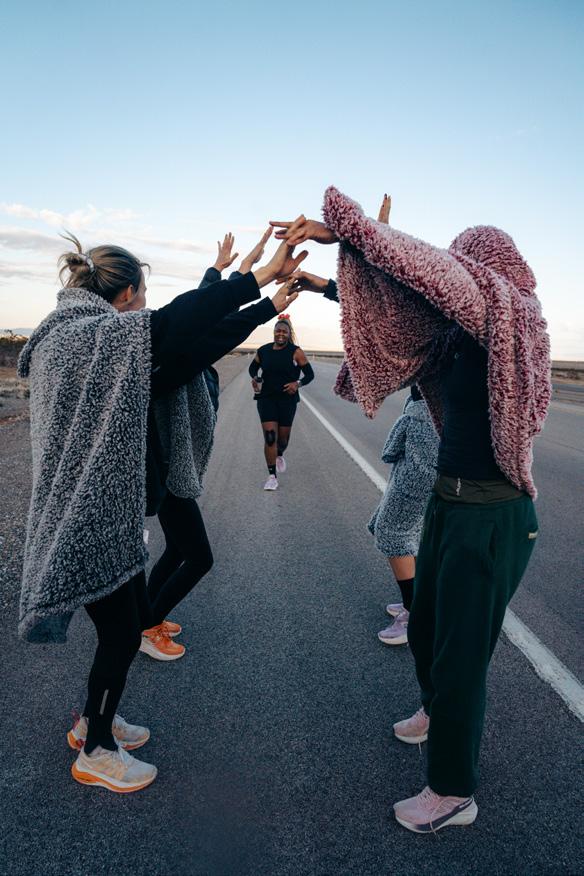
Creative, role model, inspiration, leader, and a friend to each and everyone of us; an accurate description of Tilly doesn’t come easily. Carefully crafted and based on our individual strengths, weaknesses, goals, stories, and personalities, she was the force behind our team. Somehow she knew that the fourteen of us would be the perfect fit.
Setting out across this barren land with only cacti in sight, the agitated, aggressive, stray dogs stalking the runners had us on edge. The quietness lingered in the midnight air, and we drove closely to the runners at night to ensure their safety as we ran through deserted towns.
It’s pitch black and there’s nothing to see but the glowsticks bouncing along with the runner and the headlights of cars whizzing through the darkness. Exactly where we are I’m not sure, but we’re a long way from home. The sun peeks out over the mountains and a warm orange glow with a purple sky leads us into the morning. We leave the darkness behind us.
Half asleep, half delirious, as night turns to day, we’ve got Dolly Parton on repeat, pumping loud from the speaker. Collectively we belt out 9-to-5 at the top of our lungs as Meera paces on. Despite the fact they still won’t see a finish line for hundreds of miles, the smiles on the faces of these women are unwavering. Their joy is infectious and as they continue to put one foot in front of the other, a sense of hope replaces the restless butterflies in my stomach. I’m hanging out the side of the minivan window, shooting the runners as the new day instils a fresh energy in us all following the attrition of the night.
The dawn colours are at their most vibrant and it’s Tilly’s turn to run. She chooses the music that blares out the speakers and this time around she's practically flying. I can’t hide the smile behind my viewfinder. Tears trickle down my cheek as I realise my privilege, not only to be in this moment, but to be able to capture her beauty. I’ve never witnessed a smile so big and it hits us all. Our hearts warm as we bask in this magic. With the sun cast upon her, cheers from the window, a strong stride, I photograph Tilly in her truest form. I can't believe I’m here.
I’ve never been a part of anything like this. I wasn’t there to run but to provide support alongside three incredible women. We took turns to drive the RV through the night, wake the team in the early hours, craft the ultimate peanut butter and jelly sandwiches, refill the water bottles and document those extraordinary moments. In the end it was so much more than that. Joining this team for 300 miles, we shared their highs and lows and the battles against sleep deprivation, a teammate as well as a supporter. I am so honoured to have witnessed the triumphs of all these women.
31
MAIN: As the sun started to rise Tilly felt elated. The right pace, the right song being played out the van window, and warmth hitting her skin. The team had just finished running hundreds of miles through the cold desert night.
ABOVE: Esme, Eden, Shelly, and Ocean link hands to cheer Eden on as she decides to push on and run another mile uphill.
TILLY GOMPERTS
Running is about mind and body, trust, dedication and intention. It takes place within us and therefore it is not anyone’s right to dictate how, what, where it is done, what it should look like, and who does and does not belong.



I wanted to create a team that might not be expected or be presumed able to do something like this. Everybody on this Earth has the capacity to tap into and experience the magic that running can bring, if their environment allows them to. For me, The Speed Project is about creating that environment, challenging the stereotype, demonstrating that this thing belongs to us all and embodying our mental and physical power, collectively. Running does not fit in a box. And neither do we. That’s why we can be creative in our expression, we can be artists, scientists, politicians, medics, leaders, wanderers and dreamers. We can all be runners. We are all protagonists.
ESME AKINSTALL
It feels as if the whole journey has been building to this moment. Seven miles in the middle of the Mojave. A can of pepper spray is our only assurance.

It’s the first night and the moon is barely a crescent. I look away from our headlights and into the darkness. I notice how heavy it feels, omnipresent. We step into it. I am acutely aware that we are two women running at night into the unknown but there is no one I would rather have by my side than Shelley Howard. Her voice unwavering, she is betrayed only by her shaking hands.
24-years of learned experience screams at me to turn around. We run. Soon the screaming dulls and there is nothing but the sound of breath and falling feet as we surrender to the desert.
32
MEERA JOSHI
Although they were just minutes at a time, the moments we experienced crossing the desert, will feed the days, weeks and months and likely years that follow us reaching the Las Vegas sign. One such moment was running as a group down a neverending hill into Vegas. But you can’t simply parachute into moments like this. We first had to spend the 48-hours prior, running through the dark, sleep deprived, battling the heat and the cold, turning strangers into lifelong friends. Only then does the thrill of the downhill pack truly kick in.

These are the moments that take me out of the daily grind of life, complex decision making, intricate fact patterns and the constant need to strategically plan. They remind me we are not in control. The world is full of unexpected adventures, I just need the willingness to try, put some trust in others and to keep running.
SARAH LEGRAND
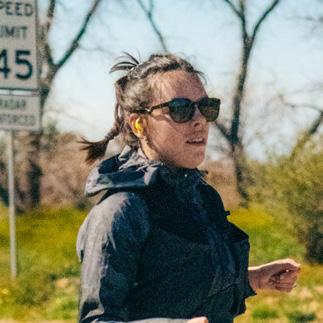

Under the stars on a dead straight road, Death Valley surrounded us, the atmosphere was special, the experience was unique. I set off at cruising pace long enough to warm my legs and adapt to the dark. The first night scared me but this time it was different. My body had recovered during the

33
“Running does not fit in a box. And neither do we. That is why we can be creative in our expression.”
TOP: An inevitability of running in the dry heat, but ruptured blood vessels inside the nose barely slowed Tilly Grompert.
MAIN: The last few miles as a pack before reaching Vegas.
BOTTOM LEFT: Eden and Tilly embrace after the run.
day and I was in good shape for the night shift. Joanna, a wonderful woman from the support crew, was running by my side to reassure me and warn me when a car was approaching from behind. I was calm, focussed on the sensations, where I put my foot and my prosthesis, because but for the stars above me, my eyes were not distracted. My mind and body were connected. Little by little, I felt really good and I increased the pace. My legs were on fire. As if the stars aligned, the girls blasted the song This Girl is on Fire by Alicia Keys through the rolled down windows of the minivan.

The moment was magical. I felt so comfortable with my prosthesis, like I had my two feet again! Right-left-rightleft- no differences, no gap between the two strides. I was running and dancing with my arms. I felt free, limitless, fearless, confident and strong in my body; a fluid, neverending moment.


34
RIGHT: Ocean with tears of pride and fatigue swigs prosecco to celebrate her amazing accomplishment.
MAIN: Reaching a runner’s high, Tilly, Ocean, and Marianne run through the desert at full speed. Since this was one of the few no vehicle access routes they ran together through the desert all on their own. Listening to techno, looking stronger than ever.
INSET: The entire team had reached 500km at the finish line together. Bypassing the line of tourists, they ran straight to the sign where bottles of processco were sprayed all over the team in celebration.
EDEN BEYLARD
Born in the French Alps, I never thought too deeply about my relationships with the outdoors, until I actually challenged myself and started training for The Speed Project

My first run with Tilly felt like an awakening from the boundaries I had built for myself over the years, believing my body and my mind weren’t capable of such a crazy idea. Running is all about commitment to the plan and consistency and this is something I now apply in other areas in my life.
Another favourite moment is also the saddest because it kind of marked the end of this adventure: the final seven miles towards the sunrise, arriving in Las Vegas. We were all exhausted from a tough journey. I got out of the car to do a mile and then just thought ‘Fuck it, let’s do it! I’m stronger than I know. I can do whatever I want!’
Our team coach used to write in my weekly training plan ‘mind over matter’. I really wanted it. To go beyond all expectations and I knew my legs and heart would follow. In the end I did seven miles straight up hill, slow and steady. I found a state of peace and meditation, a deep calm and happiness, my heart rate was slow. After seven months of struggling and dedication, I had my first runner’s high. I made it to the top with my teammates, it was a special moment and even better to share it with these people I respect, who inspire me.
I witnessed greatness in The Speed Project, with great women being part of a team alongside marathon and ultrarunners. It was an emotional journey because I had the realisation that whatever my fitness level, I belong here with them.

35
“I was running and dancing with my arms. I felt free, limitless, fearless, confident and strong in my body; a never-ending moment.”
TRANSLAGORAI
“I have blisters on my feet, and my right heel oozes with blood. But as the sun sets behind the mountains, I’m overcome by a sense of gratitude.”

36
Story and photography by | Francesco Guerra
Stretched some 70km across the autonomous province of Trentino in northern Italy, the distinctive volcanic formations of the Lagorai mountains in the Eastern Alps, date back more than 275 million years.
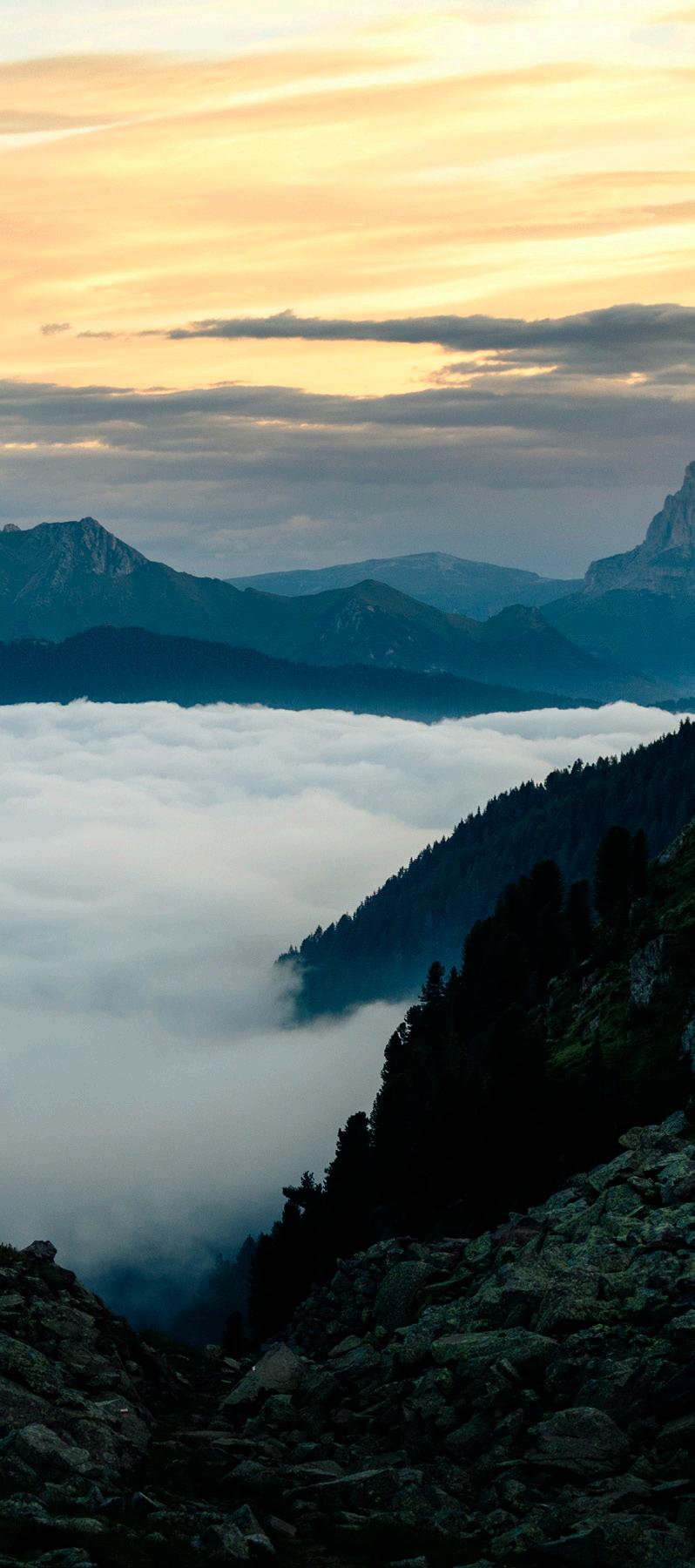
Far more recently, this rugged landscape is one bound by bloodshed. In World War 1, these peaks formed part of a natural front line, and between 1916 and 1918 were the site of the notoriously torturous mine warfare. Here, high up in the mountains, the unforgiving terrain proved as cruel as the industrial arsenals the military units brought with them. After heavy snowfall in December of 1916, avalanches are understood to have buried as many as 10,000 Italian and Austrian troops in just two days.
With only one paved road dissecting it, today, the Lagorai remains one of the last truly wild places in the Italian Alps, where, besides the perfectly preserved sites of these fierce battlefronts, the footprint of humanity is almost totally absent. In July of this year, Francesco Guerra set out to trek the Translagorai, a thru-hiking route that crosses the entire range with more than 5000m of elevation gain.
It’s 5.30am. The sun is rising behind the mountains, projecting hues of orange, pink and red across the Adamello peaks as I watch from a small window of the Fravòrt bivouac, where I spent the night.
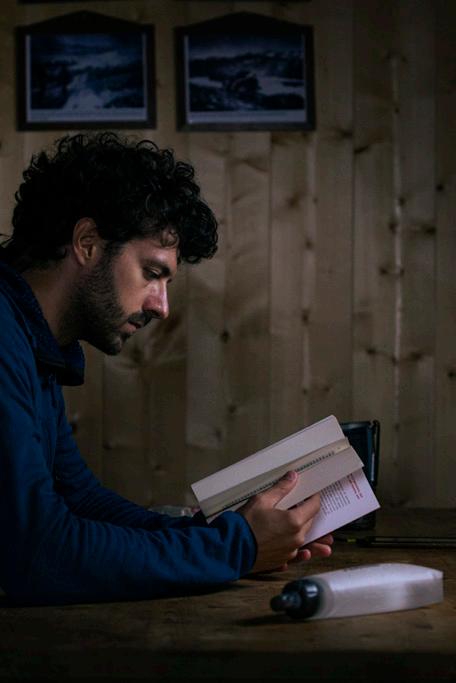
The previous afternoon, after just 4km, I was forced to cut the day short having reached the bivouac with the arrival of a violent hailstorm. I decided to stay there for the night, reworking the route, to squeeze the journey into four days rather than the original five I had planned. Due to the extreme heatwave in Italy, the weather was unstable, but ahead of me, three-and-a-half days of decent weather were forecasted before thunderstorms would return.
With the sun still behind the mountains, I’m already out on the trail with the plan to cover about 20kms. The air is still fresh, and morale is super high: it's the first day after all, and I still have no sores – how naive of me.

37
MAIN: Latemar Dolomites at sunrise.
ABOVE LEFT: First planned day, I got stuck in Fravort bivouac. I killed time reading and gazing outside but sometimes that’s exactly what it’s all about.
ABOVE RIGHT: Planning and replanning.
CLOCKWISE FROM BELOW: An old military barrack from the First World War; Hiking near Brutto lake, which literally translates as Ugly Lake. Before being engulfed totally by clouds, the last light of sunset hits my tent; Dolomites at sunset; Old and rusty barbed wire – leftovers from the First World War.



FOLLOWING PAGE: Sharing the navigation of a technical ridge at sunset with the only hikers I met during this journey.

38
I discovered Translagorai a few years ago, reading about a potential development project for these mountains. In order to stimulate tourism, local politicians proposed a huge restaurant with a refuge and a parking lot right in the middle of the range. But there’s a fierce sense of custodianship among locals, who led a successful campaign to oppose the plans. While for now, the idea has now been dismissed, considering the development and overcrowding of the Dolomites so closeby, I’m not confident it’ll always stay that way. Will I be one of the last lucky few to experience the true wilderness of the Lagorai mountains? I guess time will tell.
I follow ridge lines, traversing huge scree slopes at the foot of dark grey peaks, and head deep into the cover of lush pine forests. Finally, I reach Rifugio Sette Selle – a quiet refuge nestled in a narrow valley among the mountains – where I pause for lunch.

Over the next five hours, I met only two day hikers. Besides them and three hikers I’d met briefly at the trailhead the day before, there’s no one out here. My only real interaction was with a viper, that, with a stand-off on the trail, temporarily forced me to stop in my tracks.
As the sun starts to set and the air is sharpening, I arrive at the ANA Mangheneti bivouac. But from the gusting wind and my own steps on the uneven ground there’s no sound at all. In our hyper-fast, overly stimulating world, this peace is exactly what I was looking for. Silence and solitude at its best.

Cooking inside the cosy wooden bivouac, I hear voices outside. Before I know it, the place is assaulted by a group of 20 or more noisy teens who make it clear they’ll too be spending the night here. Talking with them, I discover that there's a simpler path also leading to that bivouac. I quieten the voice of my inner grumpy old man. I smile and get to bed, trying to sleep as my new roommates shout the place down.
With everyone else still sleeping, I let myself out at the crack of dawn. I walk as fast as my heavy backpack allows me, and soon arrive at Passo Manghen – the only paved road that crosses the Lagorai. Here, the landscape is grand, more open than the previous day. Mountain passes, alpine lakes, flourishing nature all around and, in the distance, the impressive grandeur of the Dolomites.
39
“What scares me most is hailstone, which this year in Italy have been big enough to destroy cars.”
Not far beyond the pass, I find the first traces of human passage. But it’s not footprints, not drawings on the rocks, not even bones. Instead, these are the mementos of the worst traits of human nature. Military barracks, rusty barbed wire and metal scraps are strewn across the landscape, long trench lines built on hillsides, mountain passes, or perched on cliffs.
The legacy of these mountains is one defined by the 1st World War, where Italian soldiers fought against AustroHungarian forces, both sides living, fighting and dying on these rocks for what must have seemed never-ending. Stood here amongst the silence, it’s hard to imagine the gunfire, grenades and the blood-curdling screams. Perhaps I’ve found the limit of my imagination, or maybe it’s my subconscious, unwilling to break the tranquillity, not even in my mind.

It's about 2pm when I meet Sandro, Arianna and Matteo on the trail, the three hikers I’d met previously and I decide to join them for the rest of the afternoon. Together, we traverse steep, stony passages, climb on steel cables and scramble on scree as we navigate the most technical terrain of the Translagorai trail. Approaching the final alpine pass, thick, low clouds close in, and we are wrapped in a cold, white cloak.
Upping the pace, I suddenly realise I’ve lost them. Too concerned by keeping the speed that I hadn't paid attention to anything else. I pause for a few moments but decide to keep moving, I pause for a few moments but decide to keep moving, knowing that rather than risking getting lost myself, it's better to get to safety and then wait for them or make a call for help.
I reach the mountain pass and begin the steep hike down the gravel path, eventually re-emerging from the clouds. Almost at the camping spot, I turn to see their distant silhouettes descending from the mountains. I give them a wave, and prepare camp for the night.
Before bedding down, I take a moment to stand before the landscape: my legs and my shoulders are sore, I have blisters on my feet, and my right heel oozes with blood. But as the sun sets behind the mountains, I’m overcome by a sense of gratitude. I know I’m lucky to experience such a magnificent place in all of its untouched purity, all too aware that it won’t remain this way for long.
The next morning, I cheer my fellow campers as they prep their gear for the trail, and kick off the day solo. I do my best to ignore the pain in my feet, but find myself checking the route
“Its beauty just stood right there, a wild island of stunning
stunning mountains, detached from the hand of greedy men.”

for the first possible escape into the valley. I was prepared to fail. Happy to surpass my ego to accept my fallibility, I could have abandoned the hike with good grace. But a voice inside me wouldn’t let it go. You can't abandon the hike for some sore feet. Come on, you can do it, I heard on repeat.
I pass Lago Brutto which literally translates as Ugly Lake and dwell on how this small beautiful alpine lake sat like a gemstone in this perfect spot had earned itself such a name.
At some point in the afternoon, I noticed that somehow, as if by magic, my body is no longer sore. I reach a signpost indicating a one-hour hike from where I am to the next bivouac: I time it, reaching it in 45 minutes. The components of my body, working together in unison, no longer protesting the long days in the mountains.
Waking at dawn, I have decisions to make about what lies ahead. I’m keen to avoid potential thunderstorms, so with rain forecasted, I need to be careful. What scares me most is hailstones, which this year in Italy have been big enough to destroy cars. I play it safe, choosing the lower path that runs along the hillside of the mountains. Like the previous days, the route is a variation of scree, gravel and high grass, and
before long, my feet are soaked through. I’m moving fast, but I take time to indulge a little, to admire the fauna of these surroundings, the toads, marmots, chamoises and horses.
Akin to driving on a straight, familiar, highway, on the final few kilometres of the trail, my mind has already wandered elsewhere. As Norwegian explorer Erling Kagge writes in his book Silence: ‘Being on the road almost always gives more satisfaction than arriving at your destination. We prefer hunting to the prey.’ I feel a deep sense of anticlimax as I arrive at the end of the trail. Unsurprised at this lack of joy, I was exhausted, eager to find a shower and something to eat other than dried rice.
In the four days I spent on the trail, I crossed paths with just ten other hikers. The phone signal is poor and often absent for hours and there is barely a sign of human development. Its beauty just stood right there, a wild island of stunning mountains, detached from the hand of greedy men. My only hope for Lagorai is that it will remain this way: a fragile and wild environment to be experienced on its own terms, for us and for the generations to come.
AT HOME ON THE WATER
In the comfort of the wilderness that shaped her, with a canoe, a tent and a simple objective, Carmen Kuntz ponders and paddles her way across four lakes where she revels in the simplicity of solitary adventures and considers what ‘being at home’ means to her.



Only a thin layer of mesh and nylon separates me from an army outside. The pine-infused summer air is vibrating with mosquitoes, swarming the mesh and bouncing off the tent walls, trying to find a way in. But the zippers are closed tight, and a breeze off the lake cools me as I prepare for the luxury of a pre-dinner nap. I lay back and close my eyes. A tent is a wonderful tool. As a kid, my tent was a place of secrets, a private place to hide out in the forests of rural Canada. Somewhere I could practise survival skills, play pretend and get lost in daydreams. Today, a tent offers a similar kind of refuge, yet the security a tent provides extends past protection from blood-sucking insects. Somehow, being in a tent I feel safe. Even though I’m alone. I have the entire lake to myself – the nearest person is probably on the next lake, more than five kilometres and one portage away. This kind of solitude is why I’ve come home to Algonquin Park in southeastern Ontario. Every day when the sun descends behind the jagged tree tops of the gnarled white pines, I climb into my thin fabric dome, I feel protected. And I feel at home.
Pair a tent with a canoe, and a world of exploration opens up, allowing travel over land and water. Just days before, I was travelling by air, some 6,000 km from my new home in north-western Slovenia. Two planes, a train, and four hitchhiking rides got me to the lake-side general store and outfitters on the biggest lake in Ontario’s biggest Provincial Park. Named after the indigenous people of the area, Algonquin Park covers an area of 2,955 square miles – almost a third of the size of Slovenia. Located in central Ontario, it is truly the land of lakes and forest. Besides a high density of wolves, bears and moose, in summer it also draws thousands of visitors, packed and prepared to explore the lakes and trails. Canoe tripping has a long history of recreation here and a longer history as a means of travel and trade. Some of the lakes in Algonquin were used during the 1800s when the fur trade was shaping Canada and the expansive network of lakes and rivers were akin to highways. My childhood and years as a teen were spent discovering the waterways of my backyard, first with my family, then my high school outdoor club and later also sometimes alone.
But since I swapped lake country and the sloping Canadian Shield for the sharp karst limestone of the Julian Alps, it has been years since I was on a canoe trip. I arrived at the outfitters with just a carry-on backpack and drybag of food, and rented a tent, canoe, paddle and lifejacket. Minutes after I pushed away from the sunbleached boards of the rickety dock, I was in the middle of Lake Opeongo revelling in that familiar sensation of propelling myself over the water.
42
Story and Illustrations by | Carmen Kuntz
“Home is where you feel 100% yourself, at peace with yourself and the world around you.”
Today I would paddle about 15 km – the length of the lake – to my first camp spot. The sun was out and the lake was calm, but I paddled through some patches of doubt during those first hours. It had been years since I did a canoe trip, let alone a solo. How many kilometres could I really do in a day? What about with a headwind?
I planned a conservative route, and one that was off the beaten track so I could be sure to have some space. Algonquin in the summer can be busy on the long routes linking lakes and rivers for those going for one, two or three week stretches. My short time in Canada meant I had just five days on the water, but I planned to spend each night on a new lake. I

43
ABOVE: Mountain top breakfast cuddles.
knew I had enough food and proper gear, but could I still handle the long portages? Would I feel nervous being alone? After a few kilometres of questioning myself, I fell into the meditation of paddle strokes, and my body answered my questions. You can’t forget how to canoe trip.

The first portage affirmed that. With a crunch, my canoe slides onto the coarse sandy beach. I keep my feet dry hauling my gear on shore, and survey the pile while I armour up in anticipation of the mosquitoes, tucking my hiking pants into my socks and cinching my hood tight around my face.

As I reach down for the canoe I wonder, do I remember how to get the canoe onto my shoulders? Am I still able to do it? Where do I place my hands again? Here on the gunnel, or further I’m reminded of when I first learned to hoist a canoe up onto my shoulders without help. I was 16-years-old, on a month-long canoe trip in northern Ontario. I watched the older trip leader do it, using her hips to thrust the boat up, and then swiftly sliding her body under it, placing the yolk softly on her shoulders. My boney hips were purple by the end of that trip, but I could do it. Using technique rather than force was a valuable lesson to learn as a young woman, which served me well for years while working alongside men in the outdoor industry.
Clumsily, I manage to get the canoe safely onto my shoulders, with only the frogs as an audience when I almost drop the boat, snapping low hanging branches as I stumble around like a cartoon character stuck in a bucket.
Canoe tripping is a sort-of simple metaphor for life. You carry only what you need. The items that keep you safe, dry, warm, fed and comfortable. Portaging supports this metaphor. You bite off only what you can chew (carry). When you carry too much, you make more work for yourself.




I wander through the sugar maple and beech tree stands, taking in deer and moose tracks in the muddy trail, framed by the outline of the canoe. Falling into a rhythm of steps and breaths, the echoing buzz of mosquitoes reverberates through the acoustics of the upside-down canoe. I teeter my way across roughly hewn boards laid over marshy sections of the trail, and swat at the relentless horseflies, brave enough to bite even the palms of my hands. I’m in a sort of trance when the trail opens up, and the soft forest floor is replaced by gnarled tree roots uncovered by the lapping waters of the lake. Boat down. Pack off. Sip of water. Then back the way I came for the rest of my gear.

Back in the boat, I push off shore, and float past a family of mergansers fishing for minnows in the clear water of the sand-bottomed lake. Portaging always highlights the ease of travelling by water just as the simplicity and routine of canoe tripping are part of what makes it relaxing. Every day, the actions are the same, yet the sights and experiences are different. Wake up, sip coffee. Pack
tent and gear. Paddle, float, fish, pump water in the middle of the lake, enjoying the sunburn-windburn spa treatment of Mother Nature. Stretch the legs on a portage and set camp before spending the evening swimming and sunning like a water snake on the warm rocks. But it’s the evening that is my favourite part of the day. When I stop moving and just sit. I find a spot on a small point, and set my home for the night. I get a small fire going before the sun goes down, and I’m already hypnotised by the glowing coals. The sounds and smells are familiar, sensations I miss when I’m homesick. What does home mean to me? Is it where I come from or where I choose to be? I come home when I come to Canada. But I go home when I go back to Slovenia. The orange embers don’t reply.
A loon calls from the other side of the lake, the haunting song echoes across the water. A beaver slaps his tail, telling the whole forest I’m here. Being in the Canadian backcountry is part knowing what’s out there, and equal part not knowing, and being ok with it. Wiggling into my sleeping bag I wonder why being in cities, with large populations of people make me more nervous than being amongst dense populations of bears and wolves. A little fabric tent in a loud city sure wouldn’t provide the same feeling of security that it does out here. The days pass slowly and start to blend together, yet a trip so short feels like a tease. After Opeongo I spent a night on Happy Isle Lake, then to Redrock before spending my last night on Proulx. I meet a dad and his two daughters on one of the portages. After days of solitude it was nice to exchange smiles and talk of mosquitoes and weather, but I was happy to be on my way again. Wine gums and tuna wraps fuel me through the day and I always take time to float in the middle of the lake, either fishing, painting or daydreaming. Simple but hearty dinners – like chilli and beef jerky – make for easy prep and clean up, which leaves time to read and sip a canoe trip cocktail – tequila, lemon, maple syrup and lake water – at the end of the day
A windy thunderstorm marks my last night, ensuring the tent is dripping wet when I strap it to my pack and load it into the canoe. I’ll paddle back to civilisation today – or at least the outfitters, where luxuries like ice cream will ease me back into a world of cell phones and instant everything. But before all that, I have a short 1.5 km portage and 15 km of open water on Opeongo Lake to get through.
44
When I reach the end of the portage, I know that the final test of this mini adventure will be these last kilometres. I load my canoe strategically, with a bit more weight up front, a ballast against the wind. Hugging the shoreline for as much of the lake as possible, I prepare for an open crossing. There were multiple moments on this trip that I wanted to share with someone – my mom or dad, who introduced me to tripping. My Slovenian boyfriend who has not yet dipped a paddle in a Canadian lake. This crossing is one of those moments.
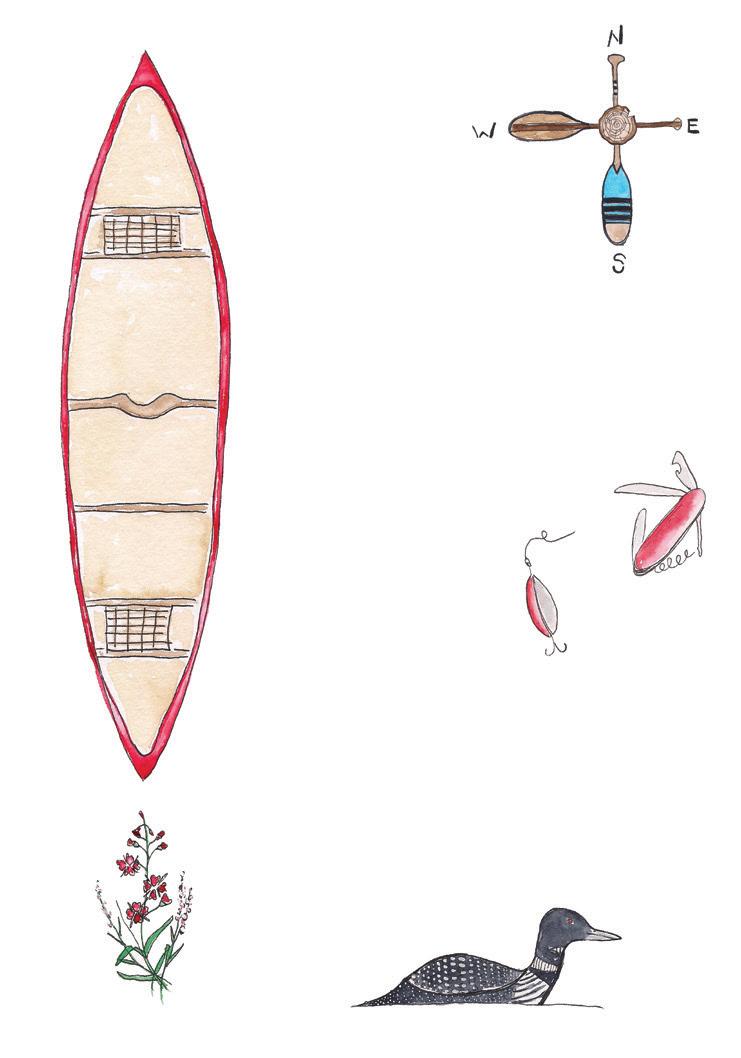





“I wonder why being in cities, with large populations of people make me more nervous than being amongst dense populations of bears and wolves.”
Over the past two decades, the west coast of Ireland has fostered an extraordinary calibre of photographic talent.

Looking back, Cornishman Mickey Smith’s legacy looms larger than most. It was he who first introduced the region to the wider surfing world in the mid-aughts, documenting the intricacies of the coastline’s most powerful waves up-close, swimming out armed with nothing but a set of fins and a DSLR in a waterproof housing. Equal parts athletic and artistic in his approach, Mickey’s work has inspired subsequent generations to take on the challenge. And challenge is the word.
Just getting near enough to shoot these waves from the water demands a high level of courage and prowess. Take the spot known as The Cliffs, where each session begins with a kilometre-long descent down a near-vertical goat track. When it finally ends on a boulder-strewn beach, at the foot of some of the country’s tallest cliffs, you’re faced with six feet of surging shorebreak and a gruelling 30-minute
swim before you even get near enough to see a surfer in your viewfinder. Or at Riley’s, which Mickey himself first discovered, where the full force of the Atlantic unloads onto a barely submerged arrowhead of rock. Caught in the wrong spot in the rip-ravaged channel, and you could easily find yourself washed into a deep ravine or worse, pounded by waves on the rocks just beyond it.
Among the new guard to take up the torch in recent years is Megan Gayda. A short, bright-eyed Essex girl, with an inexplicable perma-tan, a shock of blond hair and a broad accent that’ll ring around any room.
She’s a far cry from the typical water photographer; broad-shouldered, often brooding and almost always male. But to watch her swim out at The Cliffs, Riley’s or Mullaghmore makes a mockery of any daft preconceptions. Recently I caught up with her to find out about the journey that led her to Ireland, the gear she relies on and where she wants to go next.


Intro and Interview
Shooting the Raw Power of Ireland’s Atlantic Coast CHANGING OF THE GUARD: MEGAN GAYDA
by | Luke Gartside Photos by | Megan Gayda
IN PARTNERSHIP WITH
BELOW: Seamus McGolderick in County Clare at a super sketchy slab on a backlit sunset evening.
MPB IS THE LARGEST GLOBAL PLATFORM TO BUY, SELL AND TRADE USED PHOTO AND VIDEO KIT
Let's start at the beginning. Growing up in Essex you were super into windsurfing, right?
Yeah, my brother Lex and I got into it early, because that’s what our dad had always done. Every weekend, we would go all over the UK for events. When I was about 7 or 8, we came over to Brandon Bay in Ireland and I just fell in love with the place. After that, we’d go every summer, and when I was 16 I left school and we both moved over here.
We’d work all summer, save up the money and then go away for the winter to Hawaii or South Africa. We were into wave sailing by then, so we’d end up in places with really good surf spots. Because I was always travelling with my

brother and the boys, I had no choice but to go to where they wanted, which were always places that I was completely out of my depth. I’d spend hours getting absolutely sessioned, swimming around, chasing my kit, thinking that a shark was going to get me, while they’d all be cruising around having the best time. Looking back, I think I actually enjoyed those experiences more than the actual sailing, so that’s why I think I’ve fallen into shooting from the water quite well.
After we moved here, I sort of fell out of love with windsurfing and stopped going in much, so as soon as I picked up a camera, it felt good to be back doing something that scared me and gave me that buzz.
48
“I swam around for about three hours, absolutely freezing and not even sure if the camera was switched on half the time.”
TOP: I call this a perfect moment captured right before the wave was about to explode onto the shallow slab. This is probably my favourite image I’ve taken to date. The light, waves and whole session was just a dream.
BELOW: Taz Knight on a fun little slab also in Donegal Bay! Fun morning shooting some arty shots using the sunrise light from behind the wave.
How did you first get into surf photography?



After four years living in Brandon Bay I went to Indonesia. I got really into surfing and then moved back to Bundoran, in Donegal, to be an instructor. But I really struggled with the waves there, because it’s all lefts. I can't really surf on my backhand, so I just went pretty mad into partying and hardly ever got in the water. I was living with my brother and my ex-boyfriend who was a good surfer, so I would always go up to the slabs with them and just sit and watch for hours, just talking to everybody. One day my brother came in and was like, ‘We need to get you a camera and put you to some use if you’re just going to sit there.’ So we bought a second-hand Canon 6D and I started shooting from land. It only took about two sessions to realise that land photography wasn’t for me and I’d much rather be out there.
Before I invested in a water-housing, I borrowed my mate Ryan’s set-up. He had a Sony A7 with a Sea Frogs housing. There was a swell at Mullaghmore and my mate Taz [Knight] was like ‘Why don’t you come out?’ I said ‘Why not?’ It was a freezing cold March day, proper Mully size [ed. about three times overhead]. I went down to the harbour and asked Conor [Maguire] for a lift and he took me out there on the sled. Then they dropped me off right on the boil, and I was like ‘oh my god what have I done?’ Obviously, I couldn’t just ask for a lift back in, because I’d made this big scene of going out there, so I just had to go through with it. I swam around for about three hours, absolutely freezing and not even sure if the camera was switched on half the time. At one point I got sucked onto the inside and had to get rescued by Taz on the jetski. I remember looking back and seeing this huge wave lipping over us. I was in full panic mode but just about managed to grab onto the sled in time.
When he dropped me off in the channel, he was like ‘If you’d been wearing an impact vest and it wasn’t your first day, I would have just let you take that wave on the head.’ It was pretty nice of him to come and get me, because he could have written off the jetski going that far into the impact zone. Even though when I looked through the footage I only had about one useable clip, the whole experience just got me hooked.

49
LEFT: Tom Butler at Mullaghmore. Perfectly aligned with a rainbow above the lip.
– MEGAN GAYDA
So right off the bat the whole crew had your back out there?
Yep, they were all absolute legends. Like, where else in the world could you rock up as a little blonde Essex girl, who they’ve only ever met in the pub or on a night out and everyone would be like ‘Oh yeah, let’s take her out on the ski’? That just wouldn't happen. They gave me a chance and they’ve all been so encouraging ever since. Especially the other photographers. Guys like João Tudella, Conor Flanagan and Clem McInerney who are just on a complete other level. I’m still in the kids’ pool compared to them. It’s such a niche little industry and there’s not much work going, so you’d think everybody would be looking out for themselves and keeping the gigs quiet. But it’s not like that at all. They’ve always been so good about getting me involved with jobs and supporting me. At places like The Cliffs, they’ll just say ‘Right. Come on, you’re coming out with us.’ When I look back at my photos I try to examine where they are positioning themselves, which is easy because I’m usually sitting miles behind them.
This winter, I want to push myself to swim where they are. I think what I need to do is go out on some big onshore days without my camera and take a few waves on the head, just so I can overcome that fear and prove to myself it's actually fine.
Let’s talk about kit. What are you using?
I’ve got a Canon 6D with a Liquid Eye water housing and a Panasonic GH5 with an Ikelite housing for video. Then lenswise, I’ve got the Canon 50mm 1.8, a Canon 85mm 1.8 USM, a Canon 16-35mm which is a bit smashed up and a Canon 75300mm for shooting on land. Apart from my water housings, I get everything second-hand and generally look for older stuff that’s a good deal.
Is which lens you choose to take out mostly dictated by the wave and how close you can get or what style of shots you want to take?
A bit of both really. If I’m at Mullaghmore or any of the big wave spots, I use the 85mm, because it gives me a bit of room to sit on the shoulder. If I'm at one of the reefs where I don’t mind taking a beating, I’ll swim with the 50mm or 35mm. I love to shoot as tight as possible, so as to really capture the detail of the light coming through the lip and study the shapes the wave throws. I’d like to get some longer lenses to do more of

that kind of stuff. I actually met Ray Collins, who specialises in shots like that, at Riley's once. It was when I’d just started shooting and I didn’t know who he was. He was swimming next to me and he asked me what lens I was using. I was on a 35mm and he was on a 200mm. At the time I was like ‘You’re a bit over-gunned mate!’ And then I came in and one of my mates was like, ‘Did you just tell one of the best water photographers in the world that he’s a bit over-gunned?’ [laughs] Now I absolutely love his stuff.
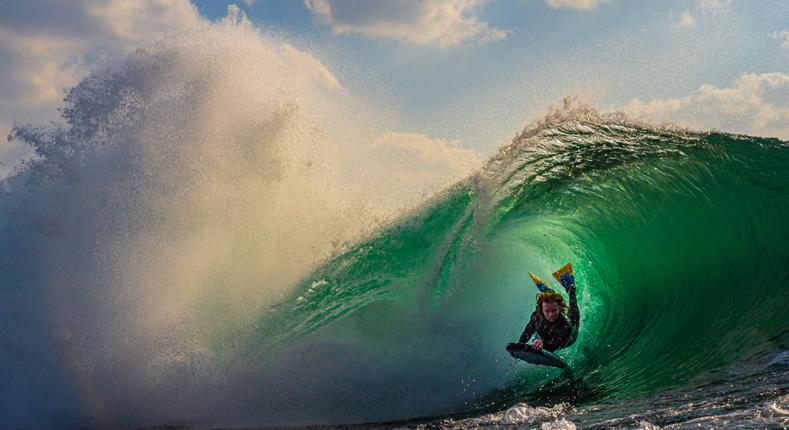
50
“Apart from my water housings, I get everything second-hand and generally look for older stuff that’s a good deal.”
Where are your favourite waves to shoot at the moment?


Definitely this slab called Bumbaloids. If I could swim one wave for the rest of my life it would be there. It’s not even really a surfable wave, it's barely boog-able. But for shooting, it’s so perfect. Every single wave throws a different shape and the backlighting there is unreal. I’ve just started up a little horsebox gallery down here at the harbour in Mullaghmore and I've printed loads of ‘Loid shots and people really seem to like them, because you don’t have to be a surfer to appreciate it.
Is your plan to stick around shooting in Ireland for the foreseeable?
Absolutely! I’m still frothing on all the waves we have here because it’s all so new to me. I’m only really two years in with my photography and I’d be happy with another 20 hunting out waves and learning them like the back of my hand.
Is there a moment from the last couple of years you’re particularly proud of?
I definitely feel like I haven’t pushed myself hard enough yet to say that. But if you come back to me after this winter and I've taken a couple of waves on the head at Mully and got a mental shot, then I might be able to say yes.
MY SET UP
Liquid Eye water housing with a 16-35MM lens port. Canon 6D camera, 16-35mm L lens, 50mm lens, 85mm Lens- 70-200mm Lens, Viper Fins and Alder wetsuits, always!

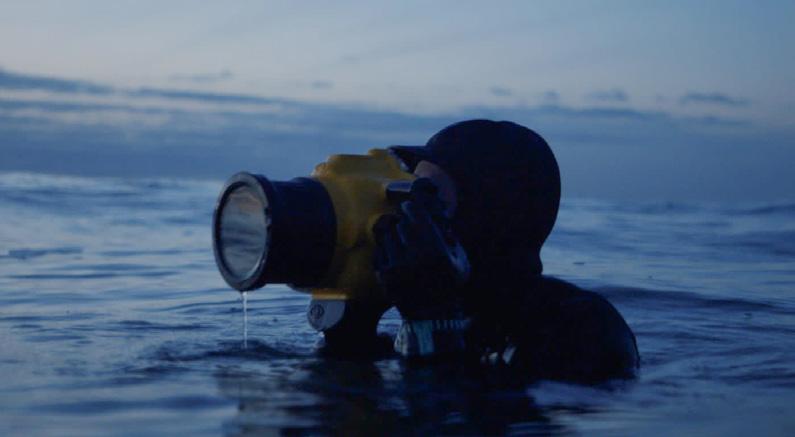
51
CLOCKWISE FROM TOP LEFT: Marli Dunne Co. Clare on a crazy flared wave! Him and the wave were both going nuts this day. So much fun to shoot!; Megan Gayda and camera; The crew on a dreamy evening at Rileys; Noah Lane at a slab in Donegal Bay.
FOOTSTEPS
Adventure often sits hand-in-hand with adversity. Willingly, in the pursuit of meaningful experience, we subscribe to temporary discomfort with both time and money. Part of what separates these moments of manufactured misery from genuine hardship though is the notion of choice. For Francesca Turauskis, as she considers the pathways of her own family, the privilege to make that choice is one she won’t take for granted.
When I decided to do my first thru-hike, I never questioned if I could walk more than five-hundred miles. Looking at the top of Spain on a map, and reading the guide books for the Camino Norte, it didn’t occur to me that it was an incredible distance and I might not make it to the end. The reason, I think, is that I am the granddaughter of refugees.
I grew up with tales of my grandmother, my babcia, that made anything seem possible. Before the Second World War,

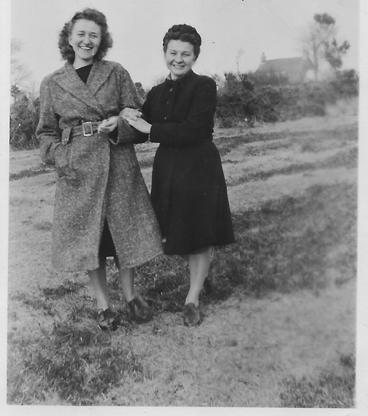
she lived with her family in a small village in south-eastern Poland (near modern day Lviv in Ukraine). Her father was a gamekeeper and forester, and the family's dinners would often include foraged plants and mushrooms. I have visions of her sharing the path to school with bears, and as a family, we still peel our mushrooms because that was how she cleaned them. Her life was like a legend told and retold by my family. But her family, along with other Polish inhabitants of that part of

52
Story by | Francesca Turauskis
Poland, were considered useful to Stalin. There was work in Russia that involved clearing large areas of forest. They needed people with forestry skills, and so in February 1940, the Russian soldiers came. The family were given half an hour to pack their world into a bag and were then deported as Special Polish Settlers to the Arkhangelsk Gulag in northern Arctic Russia.
I have heard about these Gulag days – those tales are more horror stories than legends – but the part that always intrigued me most was what happened next. In 1941, Stalin agreed to the amnesty for Special Settlers, and my babcia and her family started making their way south to where the Allied forces were setting up recruitment camps in Persia (modern day Iran). I’ve heard stories of their journey south since the age I could listen. They travelled on trains or carts where they could, but often it was by foot.
So perhaps it is no surprise that I became somewhat fascinated by the idea of travelling long distances by foot. Tales of my babcia’s real-life unexpected journey tangled together with books like Lord of the Rings (arguably the ultimate tale of thru-hiking) in a way that made such travel seem achievable. And so in 2017, when I decided to travel to Spain, hiking the Camino just seemed like the logical way to do it.
Since then, I have completed more long distance trails and hiking – graduating to trail running – but each time I’ve set out to walk the length of a country or run further than a marathon, there has rarely been a question in my mind of if I could do it. I have flopped down in the middle of the path to rest more than once, but I always knew I could get back up. The first time I reached the twenty-seventh mile of a race, I realised why marathons usually stop at 26.2 miles. But I trusted my legs to carry me the final miles. I knew I could do it, if I wanted to.
The question that actually ruminates as I move is, why do I want to? Why would I willingly put myself through adversity when I could have an easy life?
I am not alone in asking this question. In the throes of type-two fun, I think we all question our life choices. But perhaps more personal is the question of what my babcia would have thought about it all. She died when I was seven-years-old and my memories of her are very rarely of her. They are of the food she taught us to make, the picture of horses that hung in her hallway and now hangs in my bedroom. It is the incense of the Polish church we went to, and the buddleja that she grew in her garden. I remember her traumatic tale.

When I bought my walking boots for the Camino, I joked that they were my apocalypse boots, the type of footwear that would help me survive a disaster film or a zombie uprising –The Walking Dead was at its peak at the time – but behind the flippant humour, I think I do carry some residual apprehension. With my family history, I have a deep knowledge that stability isn’t a certainty. I watch my babcia’s story echoed in Ukraine, her village near Lviv affected again.
So I wonder sometimes, if perhaps I feel the need to practise for the type of trauma from which I am once removed. As I pack everything I need for 30, 50, or 500 miles into my bag, I know that I can rely on my own strength and fortitude. And whether I am hiking through countries or running a race,
the trail always brings the unexpected, both bad and good. The memory of a gifted peach on the Camino still brings water to my mouth and a smile to my face. An unexpected roof over my head in France was an evening of calm in a summer of many thunderstorms.
Hikers call these acts of generosity trail magic, and in my journeys they have provided comfort. For my family, similar acts kept them alive. My babcia told us that once, as they were passing through a Russian village, a local woman shared a small bag of potatoes with the family. It was all the food the woman had, and she gave my family half. Another time, the children spent a cold night curled up together over the warmth of a baker’s oven. It is reassuring to find similarities between my own paths and these tales.
I will never know if my babcia would have understood my walks and runs. But I do feel that by walking and running, I understand more of what she went through. She would have been pleased that the Camino was a ‘religious pilgrimage’ and the smell of the smoke in the basilica felt like a piece of her. She spoke three languages and adopted cuisine from Middle Eastern cultures. My dad believes she would have used my adventures as a good reason to tell her own stories.
And whilst she had to walk for her freedom, it is because of that journey that I now have the freedom to walk. So perhaps it doesn’t matter why I find myself covering miles under my own momentum. All that matters is that I choose to. I think my babcia would be glad that I can do that.
53
FACING PAGE (L-R): Beirut, 1946. My babcia as a young woman, third from left; This is the earliest photograph we have of my babcia, Jozefa, third from right. Early spring 1939; Jozefa and her sister Hela in Hereford, 1950. ABOVE: Babcia and me, Christmas 1994.
“Perhaps it doesn’t matter why I find myself covering miles under my own momentum. All that matters is that I choose to.”
URNER IN A ONER

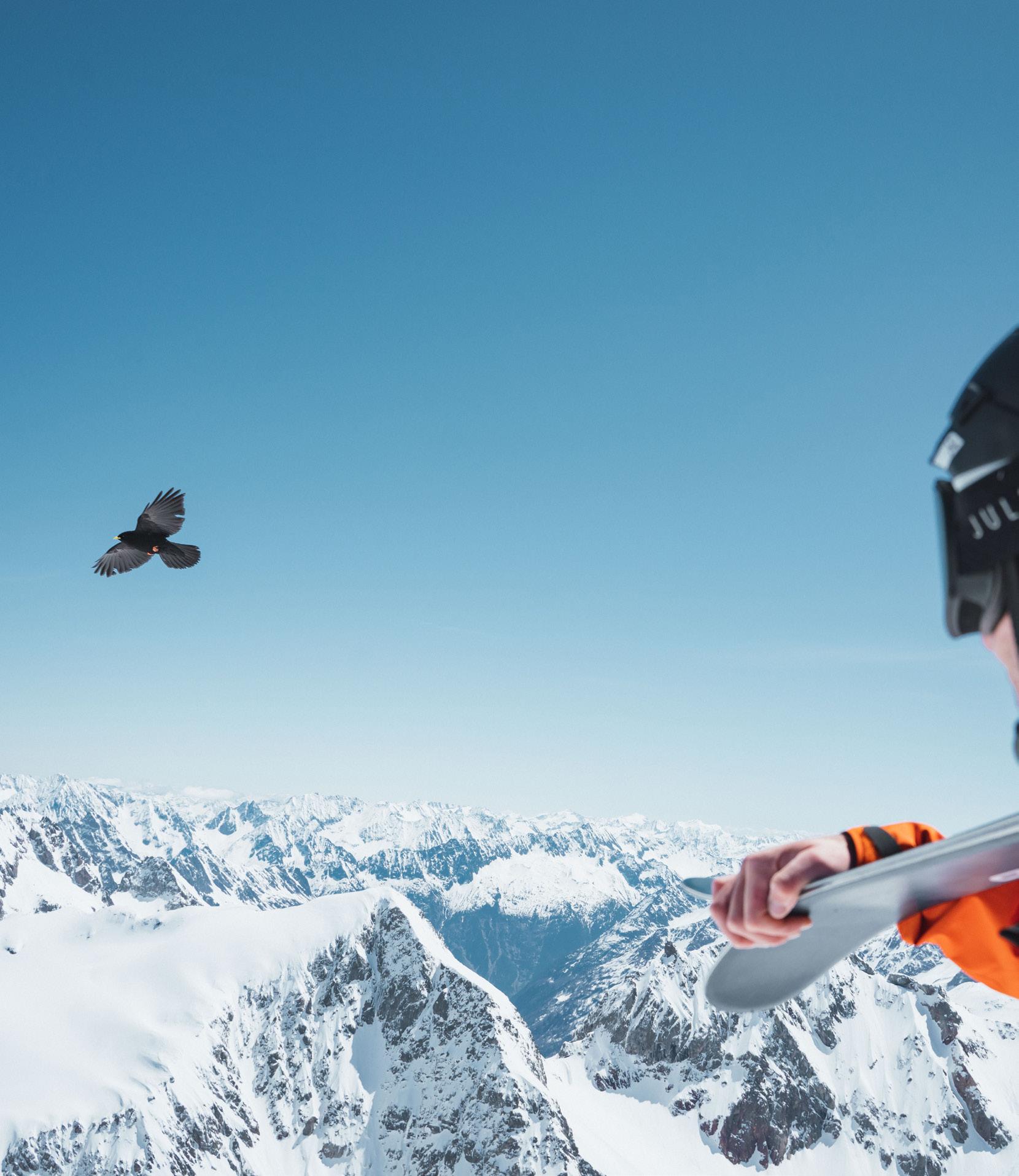
54
Story by | Aaron Rolph
Photography by | Mark Chase
Connecting the Alpine towns of Andermatt and Engelberg, The Urner Traverse is a 65km ski tour through the Urner Alps of Central Switzerland. Often dubbed the ‘skier’s Haute Route’, the less-travelled journey offers an excellent alternative to the ever-popular journey from Chamonix to Zermatt for those looking to avoid the crowds. Usually completed over 4-5 days, this spring Aaron Rolph set off to tackle the Urner Traverse in one continuous push.
The air is thick, heavy with clouds swirling in from the distance as nightfall fast approaches. It’s 8:26pm and I’m ski touring through one of the many breathtaking glaciers surrounded by the towering peaks of the Urner Alps, nestled in the heart of Switzerland.

The forecasted high-pressure was expected to hold until tomorrow, but all alone at over 3000m, I’m abruptly reminded that you can take nothing for granted in these mountains. The mood is threatening but there’s an unmistakable calm. With awe and trepidation in equal measure, my own headspace mirrors the atmosphere, I’m all too aware of the power and unpredictability of the Alps.
There is no doubt that moving through crevassed terrain in this bad weather is a serious situation, but I’m overcome with a sense of excitement from that natural fight or flight response. I suppose the reason some of us choose to undertake big solo adventures like this is to test our resolve and to feel small in nature. Safe to say, watching my fifth and final climb of this traverse disappear into the whiteout, there’s no shortage of either of these sensations.
Rewind about 15 hours and I was pushing off from the train station in the iconic but quaint mountain town of Andermatt, full of excitement for the day ahead.
With very limited stable weather conditions, my big plans to make a go of this earlier in the season were shelved. Arriving at the Engelberg ski lodge where I’d base myself for a few days, I made some calls to enquire about the condition of the route. I was soon informed that the refuges were now completely closed and it was now too late in the season to attempt the route.
Carefully considering my options, it felt slightly uncomfortable to dismiss their advice but it had been a good winter on the glaciers up high so I decided to make a go for it.
55
ABOVE: Looking at the route on a recce from the very top of Klein Titlis (3028m).


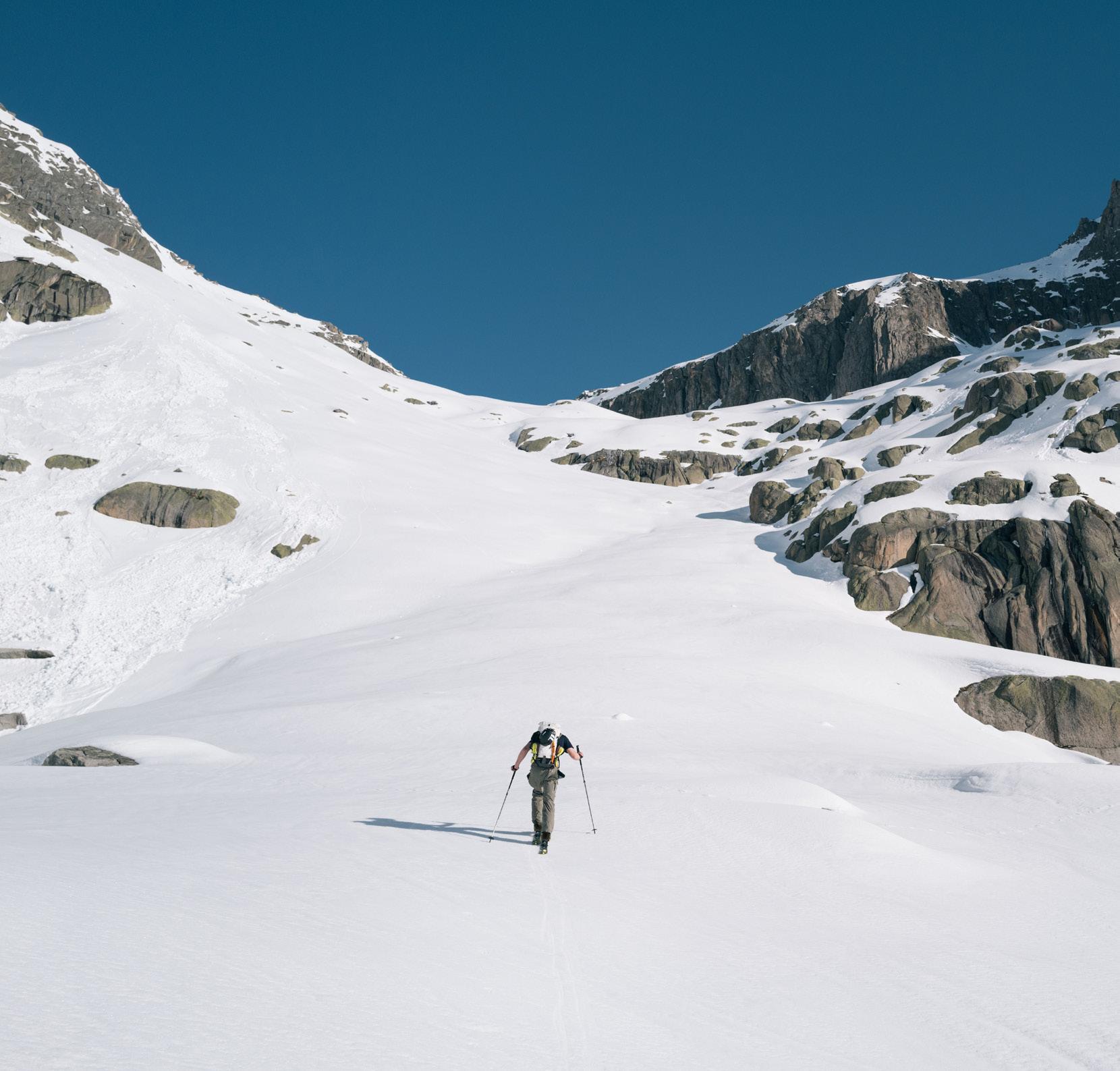
56
“My own headspace mirrors the atmosphere, I’m all too aware of the power and unpredictability of the Alps.”
So, ambitiously late, I found myself hiking up the summer road in my ski boots, enjoying the first rays of sunrise illuminating the mountains in the distance.I was joined by my good friend Mark Chase, who, flirting with the idea of coming for the whole traverse, kindly joined me to take some pictures of the attempt. On reaching the first peak though, he twinged an old ankle injury and made the smart call to turn back ahead of committing to this remote range. Bidding farewell, I had no time to waste, setting about dropping into the first face, for which I had scoped a steeper, more direct ski line on the map.

Peering over the hanging glacier, it was clear the steep and icy conditions this early in the morning would command my fullest attention. Skiing off into these remote mountains alone, I couldn’t shake the sense of immense isolation, but weaving around large chunks of frozen avalanche debris from yesterday’s natural activity, I felt the confidence in my turns and my equipment build.
I put in some neat jump turns, sliding smoothly down the 45 degree ice to reach the valley below which was almost completely full with avalanche debris. Of course, this early in the morning the avalanche risk was very low, but skiing through and around these death cookies was a brutal start for the legs.
Reaching the bottom of the snowline, the valley already lush in its spring bloom, I was hit with a reminder of the lateness in the season. I clearly had some more hiking ahead of me. Exiting the snowline proves even more arduous, forced to hike on and off snow patches sinking to my thighs. I was starting to understand why it was that guides were refusing clients this late in the season. Despite working three times harder, progress is slow.
From here, I faced a river swollen with meltwater. The bridge I’m aiming for appears to have been washed away but for two rails remaining. Precariously, I brace myself between the two, edging myself across, watching the raging torrent below.
Climbing the next valley, I felt a million miles away from the dangers up in the high mountains. The climb steepened into the snow and although I could have put skis back on, I found a good rhythm in my crampons as I scaled the icy precipice. Passing the empty refuge, the gradient mellowed into a beautiful wide-open bowl. Finally I could see the col I was headed for.
Touring these distances, breaking trail with no tracks was taking its toll on my legs, and by now the heat was stifling. Temperatures were dangerously high, but my schedule was going exactly to plan, finding myself navigating easy-going terrain when the avalanche risk would be at its highest.
The views open out to glaciers that sprawl in every direction. I was excited to rip my skins off and begin this cruisy glacier crossing, treated to cold, fresh snow up high which would soon turn to fun spring slush lower down. Feeling good, I opened up a little, skiing hard while evading the grasp of the numerous wide-open crevasses which were relatively easy to spot.

57
LEFT: Finding rhythm on the long first climb above Andermatt.
FAR LEFT: Even the rivers proved tricky. With the snowmelt having already washed the rest of this bridge away, the only way Aaron could cross was to brace himself between the rails and butt sliding over.
LEFT: Leaving the bike and going on foot up the long winding pass in search of snow.
CLOCKWISE FROM TOP LEFT: The first major col in his sights which would act as the gateway into Aaron’s solo journey into the wild; Not the usual start to a ski challenge but on the road, Aaron managed to get around 500m of vertical out the way on foot; Some of the many dramatic peaks that surround Engelberg; Finding some great cold snow despite the warm conditions; Aaron familiarises himself with route from the comforts of Engelberg ski lodge; The success of an 18 hour day? Preventative footcare and lifetime supply of Compeed; Record breaking time, all the name of making last orders at Engelberg's ski lodge.




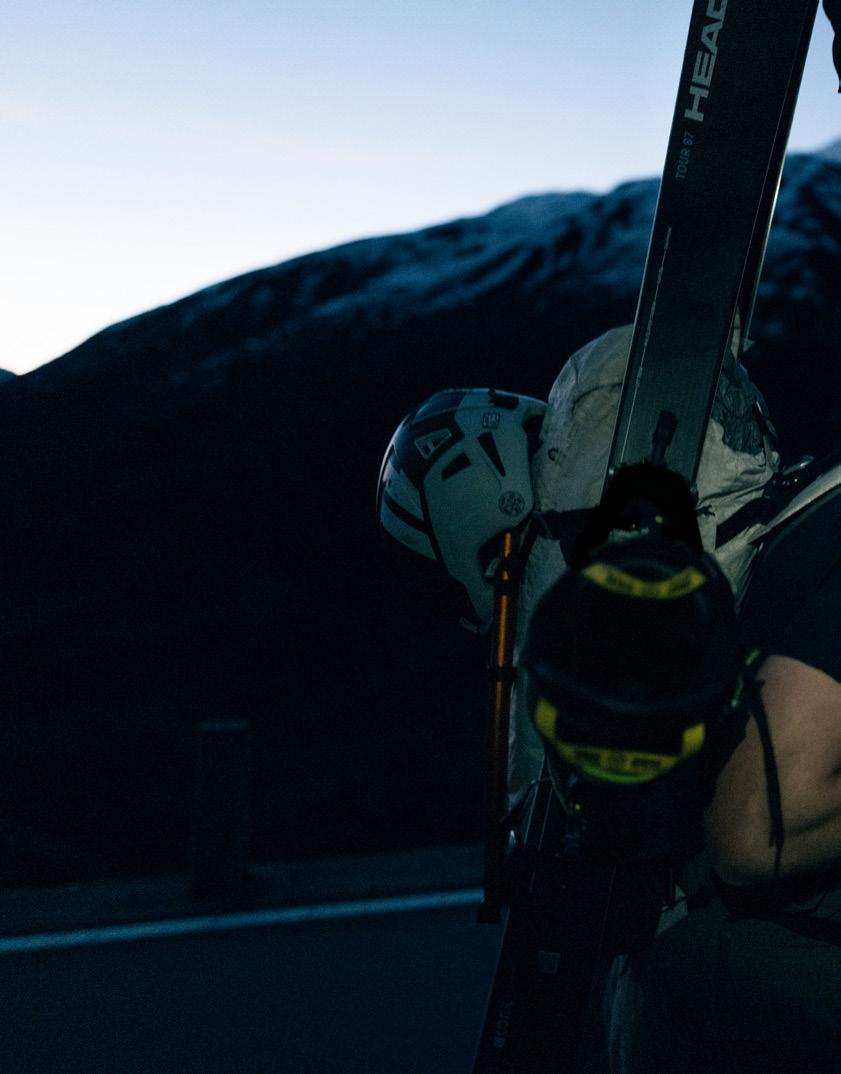
58
“
Now in total darkness, I don my headtorch for the final descent.”
Above me, hanging seracs larger than any building I’d ever seen before. On the lower slopes, there were plenty of huge glide cracks owing to the rapidly warming snow. By now, my legs feel every kilometre covered but, I was reassured by the realisation that I’d made it closer to Engelberg than I was to Andermatt.
The temperatures cool again and I find a rhythm once more on this long and beautiful tour, all the way back up to 3000m. The sun drops lower in the sky and vivid oranges and pinks paint the mountains on the horizon, all the while the cool air makes for a more comfortable temperature in which to push hard.
In a blink of an eye, I’m in a different world. The row of peaks in front of me are engulfed one-by-one by the blanket of clouds charging in my direction. Before I know it, I’m skiing the steepest segment of my route in a total whiteout and it’s hard not to feel threatened. With only a few metres visibility, I’m forced to navigate methodically down the rock band which should take me onto the glacial plateau. Hugging the cliff takes me directly down the fall line, about a 50 degree gradient. It’s a serious technical challenge after such a big day out.
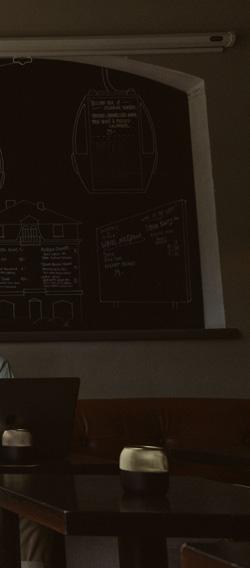


On the lower face, my skis push through a snow bridge into a crevasse. Staying light on my feet, I’m able to land below the dark chasm. Clouds are rolling in but I get a quick glimpse at the top of the col which feels like the gateway I need to pass through to get out of here safely.

Energised by a dose of summit fever and the urgency of the dwindling light, I make quick work of the climb just as night completely draws in. Now in total darkness, I don my headtorch for the final descent, popping out of the clouds which part to reveal an incredible glacier beneath me. The final stages involve some grade A combat skiing, but now, feeling less at risk, I throw myself into it, skiing through trees, hopping off small cliffs without fear.
Having seen the storm roll in, Mark had hiked up toward my exit. It was a great relief to see a friendly face once again. Despite some immensely challenging conditions, I managed to make it from Andermatt to Engelberg in 18 hours and 25 minutes and even more importantly, in time for last orders at the Ski Lodge. I’m told this is a new Fastest Known Time on the route, and although conditions were suboptimal, undertaking such a big adventure like this and getting to witness the seasons changing first-hand was a once-in-a-lifetime experience.
59
IF IT’S BROKE...

60
Story by | Chris Hunt Photos by | Patagonia archives
You don’t need me to spell out the pickle we find ourselves in when it comes to the current state of the planet. I’ll spare you the rehashed doom. You're probably aware too that one of the biggest contributing industries to climate change is the clothing industry.
Estimates suggest the textiles industry is responsible for as much as 10% of global emissions. It’s understood that globally between 80 and 100 billion new garments are produced every year, while 87% of the materials and fibres used to make clothing end up either incinerated or in landfill, while as little as 1% of clothing is recycled into new garments. Yikes.

And this isn’t just an issue for ‘fast fashion’. The truth is, the entire clothing industry is responsible and we within the outdoors culture are certainly not exempt – because oh boy, do we love new kit. As we’ve explored in previous instalments of Makers and Innovators, despite our existence literally relying on better care of the environment, our industry hasn’t always stepped so lightly. From wetsuits to rainwear, you don’t need to dive deep into the world of weatherproof protection to find a hotbed of toxic petrochemicals and microplastics.
To be fair, we are seeing changes implemented across the industry. Brands are sourcing kinder materials, using better practices with whole new ranges using labels stamped with the green recycling triangle. If we can recycle our discarded items into something totally new then we’re surely confronting the issue at several levels — chipping away at the piles of used textiles, creating new without manufacturing virgin materials, saving on valuable resources and cutting emissions, all the while preserving the economy. Right? Well, not exactly…
The reality is that recycling clothing into more clothing is a really complex process, one that’s highly labour and resourceintensive. Clothing, particularly that designed for the outdoors, is created using an array of different materials and components: Zips, tags, labels, vents, hoods, straps, it all needs to be broken down and separated before reuse.
The actual recycling process is done in one of two ways. Mechanical recycling sees garments shredded into small pieces which massively reduces the quality and usability of the fibres. This can be ok when it comes to things like creating synthetic insulation but for most products, the fibres will then need to be mixed together with virgin materials in order to be of any use again. Chemical recycling uses solvents to break down old garments, separating blended fabrics while retaining fibre integrity. It’s a costly process though, both environmentally and economically.
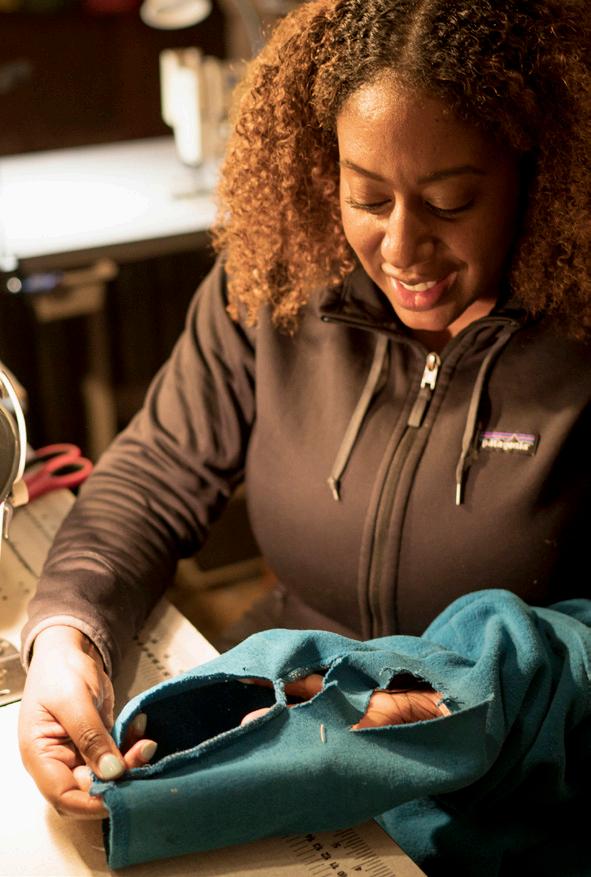
61
Facing the increasingly apparent impacts of a rapidly changing climate on a planet with a serious waste problem, we take a closer look at what’s being done within the outdoor industry to reduce consumption.
“Keeping a piece of clothing in play for just nine additional months can reduce its associated CO2 emissions by 27% and its waste by 22%.”
– LEONARD BASSE, PATAGONIA
CLOCKWISE FROM FACING PAGE: Unique fixes like this provide the item’s owner the opportunity to wear the repairs with pride. © Donald L. Hedden; Worn Wear seamstress Martina works her magic on a fleece at Patagonia stand, Kendal Mountain Festival 2022. © Hannah Bailey; Worn Wear events are a great tool to educate customers around repairs. Here, a delicate repair on an insulated jacket is carefully planned and explained ahead of execution. © Donald L. Hedden
Right now, most of the recycled polyester used in clothing in fact comes from bottles, which is no bad thing. But it does nothing to solve the issue of discarded garments, which is already spiralling well out of control. Without doubt, the most impactful thing we can do is to keep the kit we do purchase in play for as long as possible.

‘It’s great to see a lot of initiatives from different brands on organic and recycled materials but what the clothing industry really needs is to consume less,’ says Leonard Basse of Patagonia. ‘Keeping a piece of clothing in play for just nine additional months can reduce its associated CO2 emissions by 27%, its water use by 33% and its waste by 22%. We need to change the way we produce and talk about clothes by encouraging consumers to buy quality for life and empower them to repair the pieces they already have.’

The old trope of ‘built to last’ is of course not lost on a brand whose entire existence is built around saving the planet, but in an industry literally built around trashing kit, it’s not
you wait at Kendal
as straightforward as simply creating better, more durable products. As part of Worn Wear — their campaign to create a more circular system – they’re making the repair process far more accessible. Going a step further, Patagonia are weaving repair into their products from day one — and that starts with design. ‘We build our products with repairability in mind from the beginning of the process, with designs that make it easier for our repair centres and in-store tailors to give them a second life,’ continues Leonard. ‘Our gear often carries memories
62
MAIN: Repairs while
Mountain Festival. © Hannah Bailey INSET: Belgian climber and Patagonia ambassador, Sean Villanueva O’Driscoll with his favourite patched up and well-worn climb pants. © Donald L . Hedden
of adventures on the mountain, in the ocean or in our local river. The Worn Wear program started as a blog about the stories we wear, to remind people of the bond they have with a certain piece of clothing. It’s great to see that more and more customers are open to repairing and reusing their products and that longevity of clothing is becoming an important factor in the buying decision for many consumers. It encourages them to think of themselves as responsible owners, repairing when necessary and keeping gear in place for many years.’
But offering a repairs service on such a scale is no simple act. For Patagonia, ensuring the facilities and resources were in place to help them tackle the issue meant building it themselves. Connected by the Amsterdam Economic Board, in July 2022, Patagonia partnered with Makers Unite to create the United Repair Centre in Amsterdam. By offering highquality clothing repair services, the centre hopes to achieve circularity, at the same time, striving to create a positive impact at a local level. ‘As a social impact organisation, The United
Repair Centre includes a training programme through which people from different backgrounds, newcomers with refugee backgrounds, young adults and other job seekers are provided an entry to the labour market,’ he says.
And while Patagonia leads the charge when it comes to responsibility for the lifespan of their products, it’s a far greater challenge than one brand alone can handle. But, true to form, the brand is enabling the rest of the market to get on board.
‘It’s crucial for the industry to tackle these problems with a combined effort and create the systems and processes for the repair and, if needed, recycling of products,’ says Leonard. ‘Alongside Patagonia, the centre works together with other clothing companies and is open for further brand partnerships. There is a new, second location in the UK planned for later in 2023 that will help the United Repair Centre to scale its impact across Europe, and we continue to actively work with suppliers and brands to establish repair partnerships or solutions for true circularity from one product to another.’
And today, many brands across the spectrum of outdoor disciplines now offer a repair service driven by the demands of their customers. But alongside a select few, in many cases, Patagonia offers free repairs. But as margins are constantly squeezed as well as the wallets of the consumers, you can’t help but ask, what’s in it for them?

‘From a customer engagement perspective, repair is an incredible way of connecting with your audience,’ explains Leonard. ‘It gives you multiple touch points to interact with them throughout the process. At Patagonia, we use these moments to promote environmental messaging to people who may have an interest in saving our home planet. It also promotes a company’s authenticity and builds customer loyalty – if someone has a good experience with repairs, they will tell their friends and are likely to return to you when they decide a new purchase is needed.’
Ultimately though, for a circular economy to really take hold, the challenge lies in disrupting existing purchasing behaviours, upheld by a ruthlessly capitalist economy. And that means making repairs a more attractive prospect than that of purchasing new – something Leonard is endlessly optimistic about. ‘The normalisation of repair is scaling exponentially and, instead of buying new, wearing a patched, fixed piece of clothing that has been on many adventures with you, is seen as a mark of pride,’ he says. ‘Reducing consumption is the way to lower our carbon footprint, and that is exactly what Worn Wear is all about!’
63
“Our gear often carries memories of adventures on the mountain, in the ocean or in our local river.”
– LEONARD BASSE, PATAGONIA
“A strong partner knows when to pick you up and support you but also when to let you move free. It’s a dance between two people that have moved together so many times before.” Anne Gilbert Chase, alpinist and critical care nurse, knows this dance well, both in the mountains and in the ICU. “It’s a deep bond that lives on well past the journey itself.”


Bolder Together
Modern climbers are more accomplished than ever, and we don’t just mean on the wall. We’ve always valued boldness, whether that means having the vision to push highpoints into the unknown or having the audacity to demand more for our home planet. To be a strong climber means full commitment to the sport and to our communities. It means not just working towards futuristic first ascents, but working towards a better future. And we aren’t going to get there alone.
 Photos: JASON THOMPSON © 2023 Patagonia, Inc.
Photos: JASON THOMPSON © 2023 Patagonia, Inc.

for the love of endless horizons. shops nationwide | ellis-brigham.com
Nadir Khan
Torridon sunset






































 Story and photography by | Danya Schwertfeger
Story and photography by | Danya Schwertfeger
 ABOVE: My buddy Dominik Petel during one of our three-hour shifts at some time in the morning heading through a rather windy section.
ABOVE: My buddy Dominik Petel during one of our three-hour shifts at some time in the morning heading through a rather windy section.
















































































































